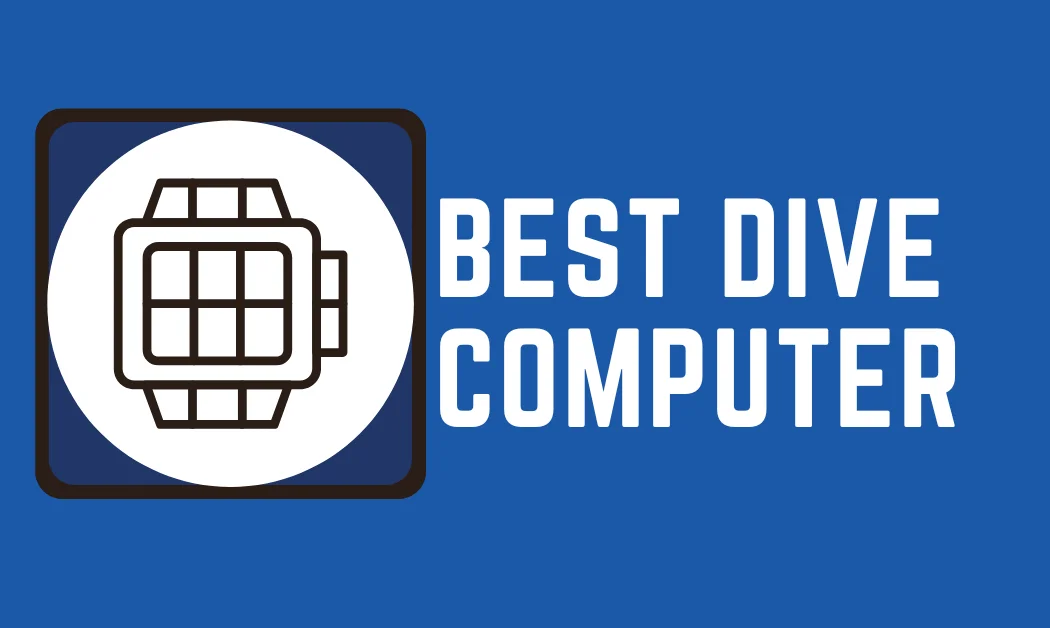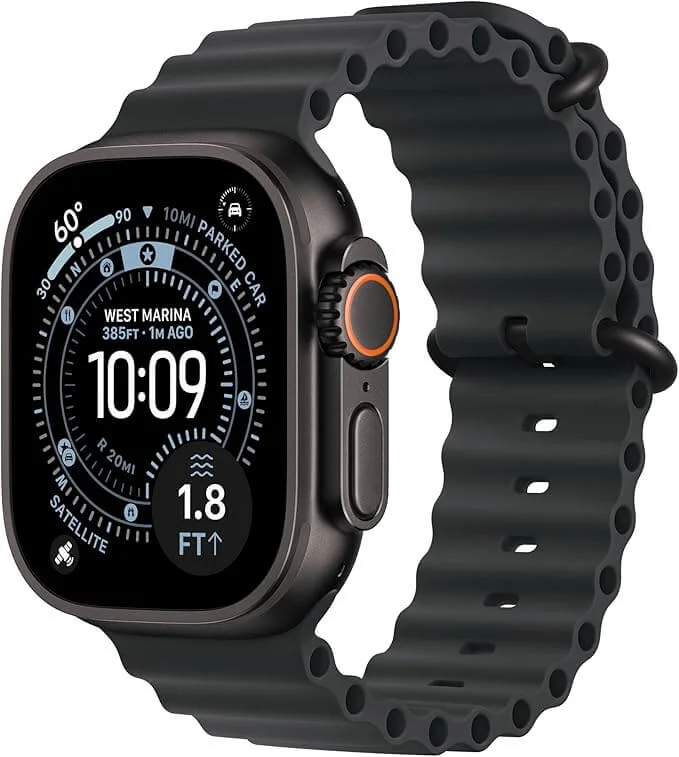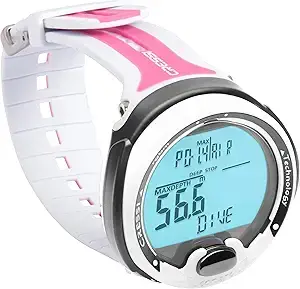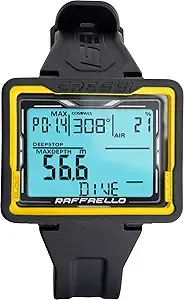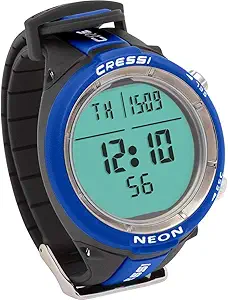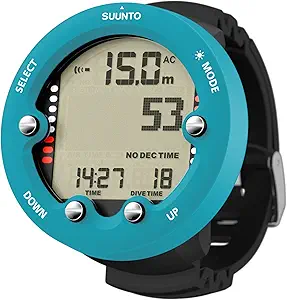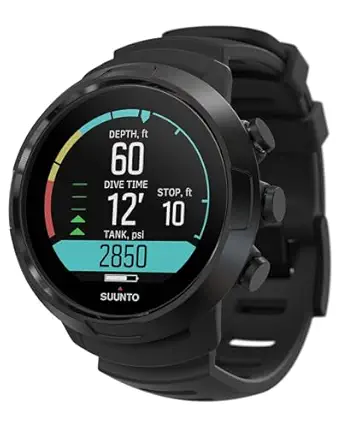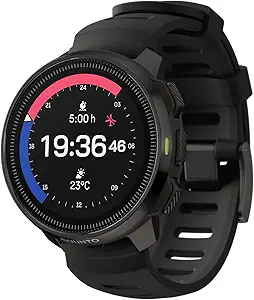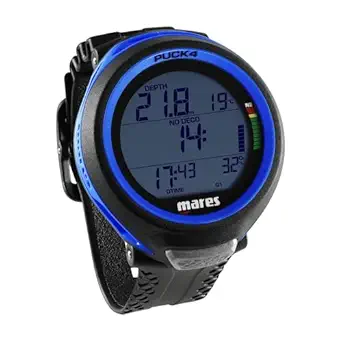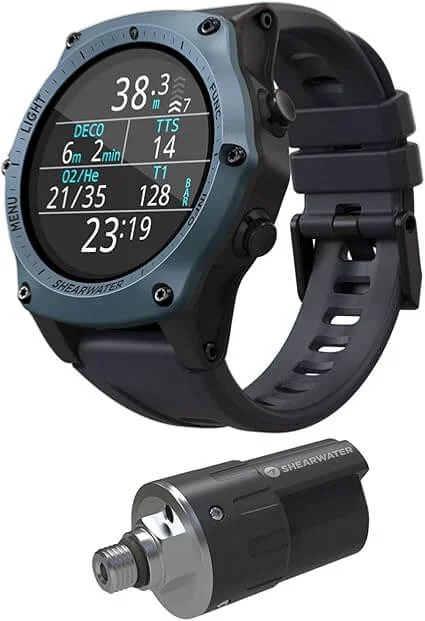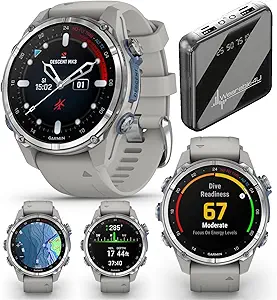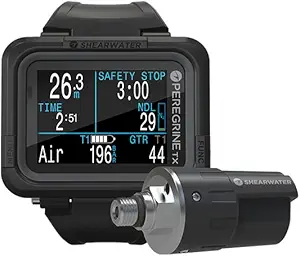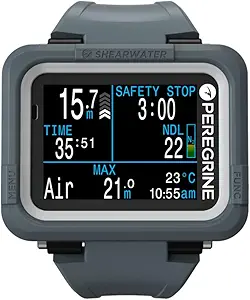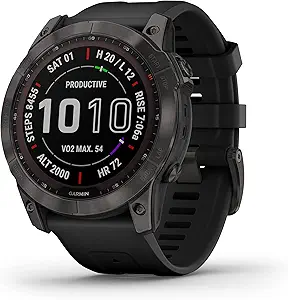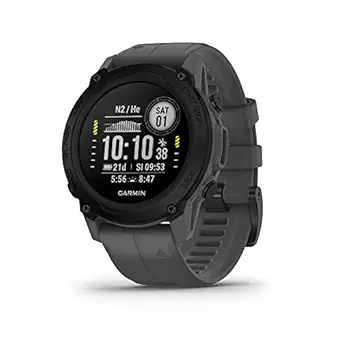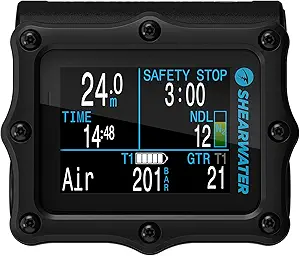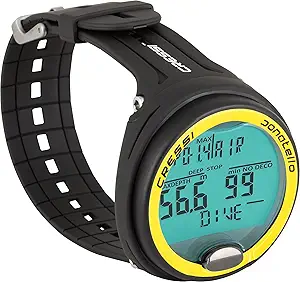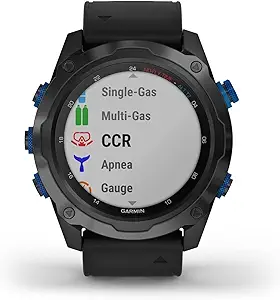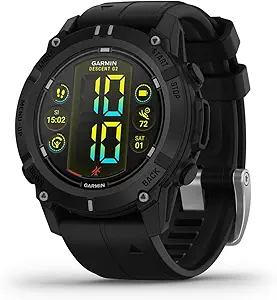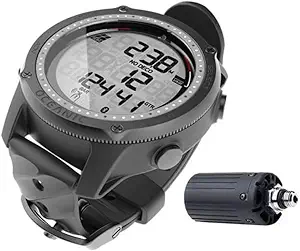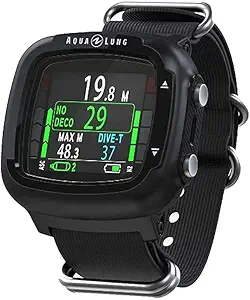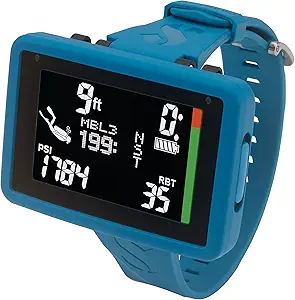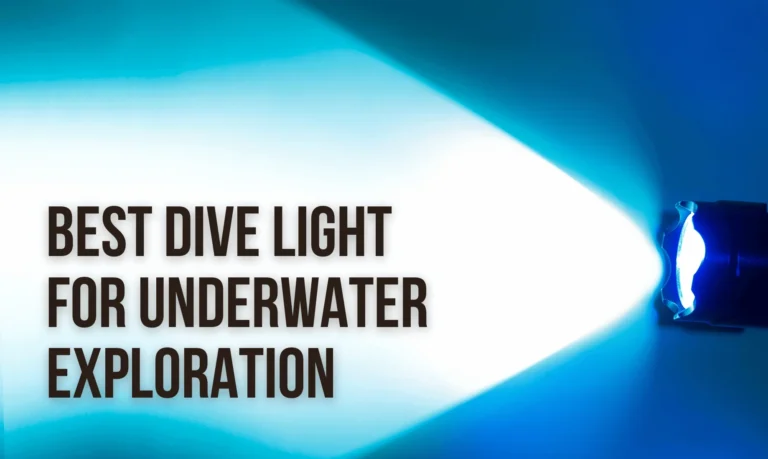Ultimate Best Dive Computer Guide 2025
Diving computers represent the technological evolution that has fundamentally transformed underwater safety protocols. Unlike traditional dive tables, these sophisticated devices continuously monitor your nitrogen absorption patterns while providing real-time calculations for decompression requirements. The algorithms embedded within modern dive computers process multiple variables simultaneously – depth, time, ascent rate, and gas mix – creating dynamic safety parameters that adapt to your specific diving profile. When descending beyond recreational limits into technical territories, these instruments become absolutely essential for managing complex multi-gas scenarios and trimix operations.
The display technology has advanced dramatically, with AMOLED screens offering crystal-clear visibility even in murky conditions. Wireless connectivity enables seamless data transfer to smartphones for comprehensive dive logging and analysis, while Bluetooth integration connects to transmitters for tank pressure monitoring. Modern wrist-mounted units incorporate digital compasses, GPS tracking, and smartwatch functionality, eliminating the need for separate console systems. Whether you’re exploring shipwrecks at maximum depth ratings or conducting freediving sessions in shallow waters, these computers maintain accuracy through sophisticated sensor arrays that measure temperature, pressure differentials, and saturation levels with remarkable precision. This makes them an important part of underwater gear.
Our 21 Best Dive Computers
Apple Watch Ultra
Beneath depths rated for recreational limits, the Apple Ultra’s dive computer functionality strips away pretense—this watch wasn’t born from scuba heritage but stumbled into underwater territory through fitness ambition. The display radiates brightness uncommon among beginner tools, yet its depth rating of 130 feet (40 m) reveals hesitation, a single-gas apnea mode that whispers rather than commits. Features like wireless connectivity and rechargeable battery life spanning weeks feel borrowed from smartwatch DNA, where GPS, heart rate tracking, and sleep monitoring across 95 sport modes dominate the interface.
The AMOLED screen beneath sapphire crystal glass serves data with visual clarity that makes depth, time, and temperature information immediate, though the absence of multi-gas capabilities, air integration, or technical modes exposes its recreational boundaries. Where Suunto Ocean or Garmin Descent Mk3i embrace nitrox, trimix, and decompression calculations through algorithms tested across years of diving experience, this computer prioritizes everyday use—a fitness device that happens to track shallow dives rather than a dive tool pretending at smartwatch functionality.
Divers seeking reliability within beginner parameters might appreciate how the Apple Ultra’s user-friendly design bypasses one-button tedium through intuitive menu navigation, its backlight never dim even during low-visibility conditions where murky waters challenge lesser displays. The rechargeable lithium-ion battery demands attention—frequent recharging after intensive use contrasts with user-replaceable CR2430 options found in Cressi Leonardo or Mares Puck Pro, where battery endurance spans 200-300 dives before replacement. Tank pressure monitoring remains absent without transmitters, no Bluetooth syncing of dive logs to DiverLog+ or equivalent platforms, limiting analysis of dive profiles and nitrogen levels post-dive.
The wrist-mounted form factor brings convenience yet feels bulky for smaller wrists, potentially snagging against BCD straps during boat dives where equipment crowds tight spaces. Students completing Advanced Open Water or Deep Diver specialty certifications will find this computer adequate for tracking bottom time and ascent rate, though progression toward technical diving demands upgrade to devices like Shearwater Peregrine TX or Garmin G1, where gauge modes, freediving options, and compass integration reflect serious underwater ambitions. The Apple Ultra exists as transitional gear—safe enough for vacation divers logging 24 dives annually, insufficient for those whose experience pushes past recreational limits into realms where decompression stops, gas mix calculations, and depth ratings exceeding 330 feet (100 m) become non-negotiable survival features.
Pros:
- Exceptional Battery Life – Users report getting 2-3 days of usage with always-on display, with some reaching over 50 hours on a single charge, eliminating the need for frequent charging throughout the day
- Satellite Connectivity – The addition of satellite technology provides peace of mind for outdoor enthusiasts, hikers, and campers who venture beyond traditional cellular coverage areas
- Enhanced Performance – Reviewers note significantly improved responsiveness and speed, with apps loading faster and the overall user experience feeling more snappy compared to previous generations
- Superior Display Quality – The larger, brighter screen with edge-to-edge viewing and always-on capability delivers excellent readability even when the wrist is tilted away, making it easy to check information at a glance
Cons:
- Watch OS26 Issues – Multiple users report bugs and glitches with the new operating system, including display timeout problems and settings not transferring properly between watch faces
- Limited Band Options – Some reviewers express dissatisfaction with the included band options, preferring to use bands from their previous Apple Watch models instead
- Blood Oxygen Sensor Limitations – Due to legal constraints, the on-demand blood oxygen reading from the watch has been removed, requiring users to process readings through their iPhone instead, making it a longer process
- Questionable Upgrade for Ultra 2 Owners – Several reviewers suggest that users with the Ultra 2 should think carefully before upgrading, as the improvements may not justify the cost for those already on the previous generation
Review Summary
The Apple Watch Ultra 3 represents a significant leap forward for users upgrading from older models, particularly those coming from the original Ultra or earlier series watches. Customer feedback from verified purchasers highlights the device’s standout feature: remarkable battery life that extends beyond two days with heavy use, addressing one of the most common complaints about previous Apple Watch generations. The satellite connectivity feature has garnered praise from outdoor enthusiasts who value the added safety and communication capabilities in remote areas. Performance improvements are noticeable across the board, with users reporting faster app loading times and smoother navigation. However, the launch hasn’t been without challenges, as Watch OS26 has introduced various bugs that have frustrated some early adopters, including display timeout issues and settings transfer problems between watch faces. While the larger display and enhanced features make it an excellent choice for first-time Ultra buyers or those upgrading from Series 8 or earlier, current Ultra 2 owners may want to evaluate whether the incremental improvements justify the investment, especially given the software issues that will likely require future updates to resolve.
Cressi Leonardo / Cressi Leonardo 2.0
When beginners first contemplate their entry into underwater exploration, the Cressi Leonardo emerges as one of those user-friendly instruments that doesn’t overwhelm with unnecessary complexity. This wrist-mounted device strips away the pretense often found in high-end equipment, delivering exactly what a new diver requires: clear, reliable information without the confusion of excessive features. The rectangular display presents essential data—depth, dive time, and no-deco limits—through large, easy-to-read digits that remain visible even when underwater visibility deteriorates. Unlike expensive computers that burden users with complicated menus and advanced settings, the Leonardo maintains its focus on fundamental safety through simple, straightforward operation that respects the learning curve inherent to scuba diving.
The single-button navigation might initially seem limiting compared to four-button systems found on models like the Suunto Zoop Novo, yet this design philosophy actually serves beginners remarkably well. Rather than forcing new divers to memorize multiple button combinations and menu hierarchies, the Leonardo’s interface demands minimal cognitive load underwater—where attention should remain focused on buoyancy, breathing, and environmental awareness. This wrist-style computer runs on a user-replaceable battery that lasts between 200-300 hours of dive mode operation, eliminating the anxiety of recharging between dive sessions during intensive vacation trips. The Cressi-branded RGBM algorithm handles decompression calculations conservatively, ensuring safe ascent profiles while the backlit screen provides adequate illumination for night dives or low-light conditions without draining power excessively.
What distinguishes the Leonardo 2.0 from its predecessor involves subtle yet meaningful improvements that enhance functionality without compromising the beginner-friendly ethos. The updated version incorporates Bluetooth connectivity, allowing divers to sync dive logs wirelessly to their smartphones via Cressi’s proprietary software for detailed analysis and record-keeping. This feature proves particularly valuable for students working toward advanced certifications who need to document their underwater experiences systematically. The algorithm remains adjustable within reasonable parameters, giving more experienced divers some freedom to customize conservatism levels as their skills develop and their understanding of dive theory deepens. The display continues utilizing high-contrast elements that prioritize readability over aesthetic flash, a pragmatic choice that serves actual diving needs rather than marketing appeal.
From a practical standpoint, both Leonardo versions support Air, Nitrox up to 99% oxygen, and Gauge modes, covering the spectrum from recreational diving through technical applications that intermediate users might explore later in their diving journey. The depth rating reaches 150 meters, far exceeding what recreational divers will encounter while providing reassurance about the computer’s robust construction. The logbook stores approximately 30-60 dives depending on the version, sufficient for casual divers who dive a few times per year but potentially limiting for intensive users who might prefer wireless data transfer to avoid losing historical information. The case material withstands typical impacts and scratches from BCD buckles and tank valves, though the display crystal isn’t mineral glass like some premium options—a reasonable compromise at this price point that keeps the device accessible to budget-conscious divers.
The Leonardo series represents Cressi’s understanding that entry-level equipment shouldn’t feel like a temporary placeholder but rather a dependable tool that grows with the user. While it lacks air integration, digital compass, smart notifications, or other advanced capabilities found in dive-computer-meets-sports-watch models from Garmin or Shearwater, these omissions actually benefit new divers by reducing potential distraction and confusion. The device maintains focus on its primary mission: helping divers stay within safe limits through accurate monitoring of nitrogen absorption and ascent rates, providing audible and visual alarms when necessary. For those who want something simple, rugged, and reliable without the steep learning curve or high price tag associated with technical diving equipment, the Leonardo delivers exactly what’s promised—a functional, no-frills dive computer that makes you a safer diver from your very first descent.
Pros
- Easy to use with single-button interface – The one-button design makes navigation straightforward underwater, with simple short and long press functions to change menus and edit settings, making it ideal for beginners and experienced divers alike.
- Large, readable display – The oversized screen provides excellent visibility at depth, even for divers with vision challenges, displaying essential information like depth, temperature, dive time, and no-decompression limits clearly.
- Handles both air and nitrox diving – Users can easily switch between air and nitrox settings, with programmable oxygen percentages and adjustable safety factors to accommodate different diving styles and gas mixtures.
- User-replaceable battery – Unlike many dive computers, this model allows divers to change the battery themselves, potentially saving money on servicing and ensuring you’re never without your computer for extended periods.
Cons
- Overly sensitive ascent alarm – Many divers report the alarm triggers too easily with minor movements like adjusting gear or small depth changes, sometimes beeping constantly throughout dives even when following proper ascent protocols.
- Weak backlight functionality – The backlight is dim and short-lived, making the display difficult to read in low-light conditions or night dives without an additional flashlight for illumination.
- Battery replacement issues – Numerous users experienced complete display failure after changing the battery, with only beeping sounds and a blank screen, requiring manufacturer service to resolve this widespread problem.
- Excessively large wristband and bulky face – The watch face is noticeably larger than typical dive computers, and the wristband is extremely long, making it uncomfortable for smaller wrists and impractical to wear as an everyday watch.
Overview
The Cressi Leonardo dive computer offers recreational divers a budget-friendly entry into wrist-mounted dive computers without sacrificing essential functionality. Customer feedback consistently highlights its straightforward operation and large display as standout features, particularly appreciated by newer divers transitioning from rental equipment. The computer automatically activates upon water entry, tracks multiple dives, and provides audible alerts for safety stops and ascent rates. While it lacks advanced features like air integration or wireless connectivity, it delivers reliable performance for standard recreational diving scenarios. However, potential buyers should be aware of reported quality control issues, particularly the widespread battery replacement problem that has left many units with non-functional displays despite proper maintenance. The conservative algorithm keeps divers on the safe side of decompression limits, though some experienced divers find it overly restrictive for repetitive dive profiles.
Cressi Raffaello
When exploring wrist-mounted options that bridge affordability with genuine capability, this Italian-crafted instrument emerges as compelling evidence that sophisticated functionality needn’t demand premium investment. The Raffaello represents Cressi’s understanding that intermediate practitioners often seek reliable depth tracking without the overwhelming complexity of technical platforms—a device engineered for those whose underwater ambitions extend beyond basic surface intervals yet stop short of multi-gas decompression protocols. What distinguishes this computer isn’t flashy marketing or premium materials but rather its robust calculation engine: the RGBM (Reduced Gradient Bubble Model) algorithm processes nitrogen absorption with conservative precision, offering divers confidence during repetitive profiles without the aggressive gradient factors that demand extensive training.
The interface prioritizes legibility through its high-contrast monochrome presentation—bright numerals against stark backgrounds ensure visibility even when murky conditions challenge clarity, while dual-button operation eliminates the frustration of endless scrolling through nested menus. Battery considerations favor practicality: standard user-replaceable lithium cells power roughly 300dives before requiring replacement, sparing owners from recharging rituals or servicing dependencies. The logbook archives 35 separate excursions with granular detail—depth, temperature, time stamps—all downloadable via optional USB cable for those committed to tracking progression through digital platforms.
This wrist companion doesn’t pretend toward smartwatch versatility or wireless integration with tank pressure transmitters; instead, it dedicates every function toward core scuba fundamentals: real-time monitoring, decompression calculation, ascentrate warnings, and safety stop reminders that genuinely enhance situational awareness beneath surface. For budget-conscious practitioners seeking dependable guidance through recreational limits (maxing at 120meters/394 feet), the Raffaello delivers value that transcends its modest price ag, proving that essential dive safety requires neither AMOLED displays nor Bluetooth connectivity—just accurate sensors, proven algorithms, and intuitive design that keeps criticaldata accessible when focus belongs entirely on navigation and marine exploration rather than deciphering complicated menu navigation.
Pros
- Exceptional Display Readability: The large rectangular high-contrast screen with backlight ensures excellent visibility even in low-light conditions and murky water, making it easy to read all diving data at a glance
- Robust Build Quality: Features reinforced casing with scratch-resistant borosilicate glass, durable metal buttons, and thick silicone strap that can withstand harsh underwater conditions and accidental impacts
- User-Replaceable Battery: Offers an impressive 4-year battery life with the convenience of user-replaceable batteries (CR2450), eliminating costly service center visits for simple maintenance
- Comprehensive Functionality: Supports multiple diving modes (Air, Nitrox, Gauge, Free/Apnea), manages up to 3 different Nitrox gas mixtures, includes integrated compass, and provides acoustic alarms for safety
Cons
- Large Size May Not Suit Everyone: The generous dimensions that improve readability can feel bulky on smaller wrists and may be cumbersome for freediving or spearfishing activities
- No Built-in Bluetooth: Requires purchasing a separate optional Bluetooth adapter to transfer dive data to smartphones or computers, which adds extra cost
- Learning Curve for Menu Navigation: While functional, the menu system requires some time to master, and button responsiveness may feel sluggish initially, especially when wearing gloves
- Premium Price Point: Positioned at a higher price range that may discourage beginners or recreational divers looking for basic entry-level options
Overview
The CRESSI Raffaello Diving Computer has garnered overwhelmingly positive feedback from verified purchasers across multiple Amazon regions. Reviewers consistently praise its superior screen visibility, with the large rectangular display and high-contrast interface making it effortless to monitor depth, temperature, dive time, and decompression data even in challenging underwater conditions. The solid construction quality stands out, with many users noting the durable materials, comfortable fit despite its size, and reliable performance across various diving scenarios from recreational to more technical dives. The 4-year user-replaceable battery is frequently mentioned as a significant advantage, providing peace of mind and reducing long-term maintenance costs. While some users point out that the device’s substantial size may not appeal to those seeking compact options, and the lack of integrated Bluetooth connectivity requires an additional purchase, the overall consensus suggests this diving computer delivers excellent value for its feature set, making it suitable for both beginners seeking a reliable first computer and experienced divers wanting advanced capabilities without unnecessary complexity.
Cressi Neon
The Cressi Neon emerged from Italy’s 1949-founded brand, carrying forward solid, well-deserved reputation across the world for producing high-quality gear that’s been enjoyed worldwide by rental centers and individual users alike. This wrist-worn device serves as your underwater guardian, utilizing algorithms and sensors to measure and provide real-time critical dive data including depth, temperature, time, and nitrogen absorption—ensuring divers stay within safe diving limits while playing a critical role in safety.
The Neon’s large, backlit display makes navigating through settings remarkably quick and easy, particularly valuable during low-light conditions or murky waters where visibility becomes challenging. Designed with simplicity in mind, this fantastic choice for those looking for something rugged offers multiple dive modes including nitrox, gauge, and free diving, plus there’s a built-in planner that can be downloaded via Cressi’s convenient interface. Unlike devices that require frequent recharging as much as every day when diving, the Neon runs on a user-changeable battery that lasts years, which covers all the essentials without unnecessary extras—though it doesn’t include wireless connectivity for Bluetooth syncing logs to your phone, something that’s frankly overkill for divers who just want a dependable, no-frills instrument built to last.
The comprehensive features combine reliability with straightforward menu options, making this ideal for beginners and rental operations seeking a rugged, popular computer that won’t pose a steep learning curve. Perhaps not the prettiest on the market, but its durability and dependable performance make it a fantastic option for divers prioritizing function over aesthetics, ultimately combining simplicity with comprehensive capabilities that make it genuinely dependable throughout countless underwater adventures.
Pros
- Comprehensive dive tracking capabilities – The device monitors multiple metrics including surface time, dive time, bottom dive time, max dive time, session time, current depth, max depth, and number of dives, providing all essential information recreational divers need.
- Dual-purpose functionality – Functions effectively as both a dive computer and everyday watch due to its normal watch size, making it practical for daily wear when not diving.
- User-friendly operation – Features straightforward, uncomplicated controls with a simple two-button navigation system that makes it easy to use without overwhelming technical complexity.
- Versatile diving applications – Suitable for both freediving and recreational scuba diving, offering flexibility for divers who enjoy multiple types of underwater activities without needing separate devices.
Cons
- Potential water intrusion issues – Some units have experienced water ingress problems even on first use, causing display malfunctions and complete operational failure at depth.
- Quality control concerns – Several customers received units with circular marks or blemishes on the display that become visible when the backlight is activated, suggesting possible refurbished or defective products.
- Limited connectivity options – Lacks built-in Bluetooth functionality, requiring users to purchase a separate connector to sync dive data with mobile apps, which is inconvenient compared to competitors.
- Color visibility concerns – The brighter color options like green can be too attention-grabbing for everyday wear, limiting the dual-purpose appeal for users who prefer more subtle, understated designs.
The Cressi Neon dive computer has garnered attention from the diving community for delivering essential functionality at a reasonable price point. Customers consistently praise its ability to track all the critical dive metrics recreational divers need, from depth and time measurements to session summaries, all displayed on a compact wrist-mounted device. The computer’s versatility stands out as a major advantage, with divers reporting successful use in both freediving and scuba diving scenarios, eliminating the need for multiple specialized devices. However, potential buyers should be aware that some users have encountered quality concerns, particularly regarding water intrusion issues that caused complete device failure even on initial dives, as well as display blemishes that suggest inconsistent manufacturing standards. The absence of built-in Bluetooth connectivity also represents a notable limitation in today’s connected world, requiring an additional purchase for data syncing capabilities that come standard in many competing models. Despite these drawbacks, many divers find the Neon’s straightforward operation and compact form factor make it a practical choice for those seeking a no-frills dive computer that can transition seamlessly from underwater adventures to everyday wear.
Suunto Zoop Novo
When serious divers seek a reliable entry point without compromising essential functionality, the Zoop Novo stands as a proven workhorse that refuses to fade into obsolescence. Unlike newer models chasing flashy integrations, this computer prioritizes dive fundamentals with a depth capacity reaching 130 feet (roughly 40 meters), making it perfectly suited for recreational diving where most underwater adventures actually unfold. The interface employs a straightforward four-button navigation system that becomes second nature after just a handful of dives, while the screen delivers readable information even when visibility deteriorates—a crucial advantage when conditions turn challenging and split-second decisions matter. Its algorithm handles both air and nitrox calculations up to 50% oxygen concentration, providing adequate flexibility for divers who eventually explore enriched air blends to extend bottom times.
The battery life extends impressively across 300-400 hours of dive time, translating to years of use before requiring replacement, and when that moment arrives, most dive shops can swap it out affordably. What makes this device particularly practical is its user-friendly approach to safety—the decompression calculations follow conservative profiles that build in margins for error, while audible alarms clearly signal when you’re approaching limits or ascending too rapidly. The logbook stores dive data comprehensively, though transferring information requires USB connectivity rather than wireless syncing—a minor inconvenience that keeps the price remarkably accessible. For those managing budgets while building their gear collection, the Zoop Novo represents a budget-friendly investment that won’t demand upgrades until you’re genuinely ready for technical territories or multi-gas switching.
The design philosophy here deliberately avoids the smartwatch convergence trend, instead delivering a dedicated instrument that excels at its singular purpose. The housing withstands the bumps and scrapes inevitable during boat dives and shore entries, while the display remains clear across varying light conditions without draining power through unnecessary backlighting during daylight dives. This model supports both metric and imperial units, accommodating divers regardless of their measurement preferences, and the automatic altitude adjustment accounts for elevation changes when diving mountain lakes—a thoughtful feature often overlooked in budget categories.
The watch style sits comfortably on the wrist during surface intervals without the bulk that characterizes some competitors, though it’s decidedly a dive computer first rather than an everyday timepiece. Its simple operation means you’re not buried in menus when you should be focused on your buddy or the reef below, and the learning curve virtually disappears after a few pool sessions. The features may seem stripped down compared to devices boasting GPS, fitness tracking, or app ecosystems, but that simplicity eliminates distractions and failure points—when you’re underwater, you want a tool that does one job flawlessly rather than juggling multiple functions marginally.
The Zoop Novo appeals specifically to divers who view their computer as essential safety equipment rather than a status symbol, those who’d rather allocate funds toward dive trips than technology overhead. It’s a watch-style dive computer that proves you don’t need advanced connectivity or touchscreen interfaces to track nitrogen loading accurately, monitor ascent rates effectively, and return to the surface safely—which, ultimately, defines what any competent dive computer should accomplish. This gear continues earning recommendations precisely because it avoids chasing trends that add cost without enhancing core functionality, making it an ideal foundation for anyone building their diving journey on solid, dependable principles rather than fleeting features.
Pros:
- Large, easy-to-read display – Multiple reviewers highlight the oversized screen with clear digits that remain readable underwater, even for divers who wear prescription lenses or have vision challenges
- Beginner-friendly operation – The device activates automatically when submerged at around 2 feet depth and requires minimal setup, making it ideal for amateur and recreational divers
- Reliable safety features – Users report consistent audible alerts for rapid ascent and no-decompression time warnings, with the computer automatically calculating required safety stops
- Durable construction from trusted brand – Suunto’s reputation for quality sports watches is evident, with many dive shops using this model as their rental computer of choice
Cons:
- Difficult-to-press buttons – Numerous reviewers complain that the buttons, especially the MODE button, are stiff and require excessive force to operate, sometimes failing to register presses
- Excessively long wrist strap – The band is designed for diving gloves and drysuits, making it uncomfortably large for smaller wrists and requiring professional adjustment or trimming
- Poor manual and documentation – The included instructions are criticized for tiny font sizes, missing information, and lack of clarity, with some units not including a physical manual at all
- Expensive proprietary accessories – The USB data cable costs around $85-90 separately and doesn’t come standard, with past confusion about which cable version is compatible with this model
Review Summary:
The Suunto Zoop Novo has established itself as a popular entry-level dive computer among recreational divers, particularly those seeking straightforward functionality without overwhelming complexity. Reviews consistently praise its generous display size and automatic activation feature, which make it accessible for beginners who want to focus on diving rather than fiddling with technology underwater. The computer handles essential safety functions well, providing clear depth readings, no-decompression limits, and audible warnings when needed. However, prospective buyers should be aware of some recurring issues mentioned across reviews: the buttons can be frustratingly stiff to operate, requiring significant pressure that becomes problematic when wearing gloves, and the wrist strap comes sized for drysuit diving, necessitating professional adjustment for average-sized wrists. Additionally, the absence of a comprehensive printed manual and the high cost of the optional USB cable for dive logging may disappoint some users. Despite these drawbacks, many divers report satisfactory experiences with the Zoop Novo for basic recreational diving, noting that its limitations are primarily related to user interface and accessories rather than core functionality or reliability.
Suunto D5
The Suunto D5 strikes an intriguing balance between technical precision and wearable sophistication, delivering a dive-computer-meets-sports-watch aesthetic that feels elegant enough for everyday circulation yet robust enough for serious underwater exploration. What sets this device apart isn’t merely its dive-depth rating of 197 meters or its support for apnea protocols—it’s the exceptional user experience crafted in terms of both hardware interaction and digital ecosystem integration.
The graphically rich companion app provides free topographical maps and social sharing capabilities that transform solitary descents into community conversations, though it’s worth noting that some premium features require subscription access. While the D5 lacks the extensive activity tracking ecosystem that competitors like Garmin have cultivated over years of development, Suunto represents a compelling mid-range option for those prioritizing visual appeal and intuitive design over extensive feature sprawl.
What’s particularly fascinating about this model is how Suunto’s engineering philosophy manifests in the protected sapphire crystal display—a detail that signals their commitment to longevity rather than disposable tech culture. The LED backlight delivers excellent visibility even in low-visibility conditions, making underwater navigation significantly less stressful during twilight dives or murky water encounters. Beyond basic dive computer functionality, the D5 also works as a full-featured fitness tracker with built-in GPS, sleep monitoring, and over 95 sport modes, ideal for those who lead active lifestyles that extend far beyond the water.
The dive settings panel gives you full control over decompression parameters and safety margins, allowing customization that respects both conservative planning and progressive exploration. For beginners looking to grow into their gear without constantly upgrading, this represents an excellent investment—the interface is easy to grasp initially yet includes depth necessary for developing competence, ensuring the device remains relevant as your capabilities expand.
Pros:
- Rechargeable USB battery – Users appreciate not having to replace batteries or visit a jewelry store for battery changes, with the convenience of overnight charging using a standard USB cable
- Easy-to-read display underwater – Multiple reviewers confirm the screen is bright and clear in actual diving conditions, particularly in direct sunlight and at depth, despite some concerns about surface brightness
- Seamless Bluetooth connectivity – The Suunto app syncs dive logs effortlessly via Bluetooth, allowing divers to review depth profiles, temperatures, and air consumption data immediately after dives
- Highly customizable interface – The three-button navigation system and customizable display screens let users configure exactly which data they want to see during dives, reducing unnecessary menu scrolling underwater
Cons:
- Limited battery life for multi-dive days – Several reviewers report the battery only lasts 2-4 dives instead of the advertised 12 hours, requiring daily charging during dive trips and potentially running out mid-day
- Dim screen in certain conditions – Some users find the display noticeably dimmer than advertised, particularly when viewing from angles or comparing to competitors like the Shearwater Teric
- Compass calibration issues – The digital compass requires recalibration after each charge, and some users report it doesn’t work properly during dives, limiting its practical navigation utility
- Durability concerns – Multiple one-star reviews mention complete device failure within 18 months to 3 years, with the black finish scratching easily and some units experiencing fatal errors requiring replacement
Review Summary:
The Suunto D5 dive computer has garnered attention among recreational divers for its modern feature set and user-friendly design. According to verified customer feedback, this wrist-mounted computer stands out for its rechargeable battery system and intuitive three-button interface that divers find easy to navigate even while wearing gloves. Many users praise its vibration alerts for safety stops and the clear underwater visibility of its color display, particularly appreciating how dive data seamlessly transfers to smartphones via Bluetooth for post-dive analysis. The optional air integration with the POD transmitter receives positive mentions for accurately tracking remaining air time. However, potential buyers should note that real-world battery performance falls short of manufacturer claims, with most divers reporting only 2-4 dives per charge rather than the advertised 12 hours. Some reviewers also express concerns about the compass functionality requiring frequent recalibration and a handful of users experienced complete device failures within the first few years of ownership. For recreational divers seeking an affordable entry into color dive computers with modern connectivity features, the D5 offers compelling value, though those planning multi-dive days or extended liveaboard trips may want to factor in the need for daily charging.
Suunto Ocean
The Suunto Ocean represents a sophisticated evolution in dive computing, where Finnish engineering meets underwater precision. Unlike traditional approaches that prioritize either recreational simplicity or technical complexity, this wristwatch-style device strikes an unusual balance by integrating daily wearability with serious diving capability. The computer supports multiple dive modes including air, nitrox configurations, and gauge functionality, making it adaptable for divers who refuse to be limited by single-purpose gear. What makes this particular model stand out is its commitment to providing comprehensive data without overwhelming the user – the bright display remains readable even when water conditions challenge visibility, while the intuitive interface allows quick adjustments between different settings during surface intervals.
Depth performance reaches impressive ratings that accommodate most dives divers will encounter throughout their journey, from shallow reef explorations to deeper wall descents. The Ocean handles decompression calculations using proven algorithms that balance safety margins with practical dive time, though some experienced users might find the conservatism settings less granular than premium alternatives. Battery performance deserves attention – the rechargeable system delivers solid longevity during extended dive trips, eliminating the frustration of battery replacements mid-vacation. The GPS integration proves useful for logging dive site locations, while Bluetooth connectivity enables seamless syncing with the companion app for detailed dive analysis. Compared to competitors that force divers to choose between watch aesthetics and dive functionality, the Ocean maintains its appeal as everyday wear without compromising its primary purpose beneath the surface.
The titanium bezel and sapphire glass construction speak to durability expectations, essential when gear takes repeated hits from boat ladders, tank valves, and rocky entries. Navigation features include compass functionality that works reliably underwater, though divers accustomed to advanced tech dive computers might notice the absence of certain specialized functions like multiple gas switching or CCR support. The Ocean clearly targets the diver who wants quality without entering the realm of extreme technical diving – someone who values reliability over every possible feature. Price positioning sits in an interesting space where it costs more than entry-level options yet remains affordable compared to top-tier alternatives with AI integration or full tech capabilities. This makes it particularly attractive for divers who have progressed beyond beginner level but aren’t ready to invest in professional-grade equipment.
Long-term value becomes apparent when considering how the Ocean grows with developing skills – its feature set remains relevant as divers advance from basic open water adventures to more challenging environments. The lack of proprietary accessories or expensive add-ons keeps total cost of ownership reasonable, while the robust design suggests this computer will handle years of regular use. Software updates delivered through the app ensure the device stays current with improvements and refinements, extending its useful life beyond what fixed-firmware models offer. For divers seeking a dependable, versatile dive computer that doesn’t demand constant attention to complex settings yet provides accurate, actionable information when it matters most, the Suunto Ocean delivers consistent performance that builds confidence underwater. The real question isn’t whether it offers enough features, but whether divers will actually use everything it provides – and for the majority, the answer leans decidedly toward yes.
Pros:
- Exceptional Diving Capabilities – Users consistently praise the precise decompression algorithms, reliable depth monitoring, and seamless dive mode activation, with support for mixed gases (Nitrox & Trimix) making it ideal for both recreational and technical diving
- Outstanding Battery Life – Multiple reviewers report 14-18 days of battery life for regular use, with the dive mode lasting through numerous dives without requiring a recharge, significantly outperforming competitor devices
- Superior Display Quality – The high-contrast AMOLED touchscreen remains easily readable in low-light underwater conditions and works flawlessly even with diving gloves on, with brightness and resolution impressing users from competing brands
- Excellent Multi-Sport Functionality – Beyond diving, users appreciate the accurate GPS tracking, comprehensive health monitoring (HR, SpO2, HRV, sleep tracking), and 30GB storage for offline worldwide maps, making it a versatile adventure companion
Cons:
- Limited Customization Options – Several reviewers express disappointment with the minimal watch face selection (only about a dozen basic options) and limited shortcut customization, which feels restrictive for such a premium device
- Size and Weight Issues – The watch is notably bulky and heavy, particularly problematic for users with smaller wrists, with the extra-long diving strap often being too large for everyday wear
- Heart Rate Sensor Inconsistencies – Some users report that the heart rate monitor takes time to lock on and produces erratic readings during workouts, with one reviewer specifically noting it uses an older sensor technology rather than the newer, more accurate version
- Software Bugs and Missing Features – Users have encountered issues like weather sync failures, frequent compass calibration requirements, occasional GPS lockups, and the surprising absence of music download capabilities despite having ample storage space
Product Overview
The SUUNTO Ocean Dive Computer has generated overwhelmingly positive feedback from Amazon customers, with divers praising its professional-grade features at a relatively accessible price point. According to verified purchasers, this watch stands out for its accurate decompression calculations and depth monitoring, with several reviewers noting it outperforms alternatives like the Apple Watch Ultra and competes favorably with the Garmin Descent while offering better screen visibility and replaceable batteries. The device shines particularly in its diving capabilities, supporting tank transponders for real-time gas monitoring and providing reliable alerts for depth limits and ascent rates. However, customers who purchased it primarily as an everyday smartwatch have been somewhat disappointed by its limited customization options and occasional fitness tracking inconsistencies. The consensus among reviewers is clear: if you’re a serious diver looking for a dedicated dive computer that can double as a capable adventure watch, the SUUNTO Ocean delivers exceptional value, but those seeking primarily a fitness smartwatch with occasional diving capabilities might find better options elsewhere at lower price points.
Mares Puck Pro / Mares Puck 4
When the ropes of technical specifications feel overwhelming, the Puck Pro emerges as a standout instrument that strips away unnecessary complexity while maintaining serious functionality. This versatile unit operates as both a capable dive computer and gauge mode option, rated to 130 feet (40 m)—a depth limit perfectly suited for recreational boundaries where most divers spend their underwater hours. The sleek design philosophy here centers on easy comprehension rather than feature bloat; students and learning divers particularly appreciate how the easy-to-read interface eliminates confusion during actual submersion when cognitive load already runs high. Unlike expensive alternatives demanding advanced technical knowledge, this choice supports single-gas nitrox up to 100%, letting you dip into enriched air without extreme investment. The small form factor doesn’t compromise visibility—the display remains good even in challenging visibility conditions, and the two-button navigation system proves intuitive when navigating through menus becomes necessary mid-dive.
What makes this computer great involves its uncomplicated approach to diving progression. Many divers looking to grow beyond basic recreational limits find the Puck Pro serves as an excellent bridge—it won’t handle trimix blends or closed-circuit rebreather (CCR) configurations, but that’s simply not its mission. The gauge functionality allows freedive tracking alongside scuba applications, creating versatility within recreational parameters. Battery life extends well into multiple dive vacations before requiring replacement, and the unit lasts reliably without the high-maintenance demands of rechargeable systems. This device offers Profile-Dependent decompression algorithms that adjust conservatively based on your actual dive profile rather than applying generic calculations—a technology refinement borrowed from pro-level engineering. The absence of wireless connectivity or smart integration might seem limiting, yet this simplicity ensures the computer remains fully functional as a dedicated underwater tracking tool rather than attempting to double as an everyday smartwatch with divided attention.
The Puck Pro represents that ideal intersection where price meets capability for casual divers who want reliability without bonus complications. It won’t connect to transmitters for air pressure monitoring, lacks full-color AMOLED displays found in flagship models, and certainly doesn’t feature the crystal-clear resolution of high-end alternatives like the Peregrine or Luna 2. But evaluating this dive computer against tech-capable instruments misses the point entirely—it’s designed for divers who prioritize straightforward information delivery over customizable complexity. The features present work exceptionally well: nitrox calculations prove accurate, ascent rate warnings come at appropriate thresholds, and the mode switching between gauge and computer functions operates without confusion. For those beginning their underwater journey or maintaining recreational parameters, the Puck Pro delivers exactly what’s needed: a competent, durable instrument that won’t pose unnecessary learning curves or drain bank accounts. This choice won’t win awards for innovation, but it excels at being precisely what many divers actually need rather than what marketing departments suggest they should want—a solid, reliable companion that keeps pace with skills development without demanding you climb the ladder into technical territories prematurely.
Pros:
- Intuitive one-button operation makes it extremely user-friendly, especially for beginners who want to avoid unnecessary complexity while diving
- Excellent Bluetooth integration allows seamless syncing with multiple apps (Mares, SSI, and Subsurface), making dive log management effortless
- Clear, large display with easy-to-read numbers ensures excellent visibility underwater, even in challenging conditions
- Multi-gas capability with ZHL-16C algorithm supports recreational and basic technical diving with Nitrox and multiple gas mixtures
Cons:
- Overly conservative algorithm consistently provides 15-20% less dive time compared to other brands, which can be frustrating for experienced divers
- Single-button interface can be cumbersome when navigating menus or adjusting settings, particularly when trying to activate the backlight in dark conditions
- Limited gradient factor customization caps GF values at 85% maximum, restricting flexibility for dive planning and personalized decompression preferences
- Gas switching restrictions require Gas 2 to have higher O2% than Gas 1, making it incompatible with certain backup gas configurations like carrying air in a pony bottle
The Mares Puck 4 has garnered positive feedback from divers across multiple experience levels, with many praising its straightforward approach to dive computing. Customers consistently highlight the device’s user-friendly design, particularly appreciating how the single-button operation eliminates complexity for recreational divers who simply want to enjoy their underwater adventures without wrestling with complicated settings. The Bluetooth connectivity has been a standout feature, with users noting how convenient it is to automatically upload dive data to their preferred logging apps. However, some experienced divers have expressed concerns about the algorithm’s conservative nature, reporting significantly shorter no-decompression limits compared to other dive computers on the same dives. Despite this limitation and occasional frustrations with menu navigation, the Puck 4 remains a popular choice for beginners and intermediate divers who value simplicity, reliability, and modern connectivity features at an accessible price point.
Shearwater Teric
The Teric represents Shearwater’s ambitious foray into watch-style computing, where traditional timekeeping merges seamlessly with advanced underwater capabilities. Unlike conventional approaches that prioritize either surface functionality or diving features, this computer challenges the notion that you must compromise between everyday wearability and technical performance. The crystal-clear AMOLED display delivers exceptional visibility whether you’re reviewing logs in bright sunlight or navigating through murky waters at depth, while the Li-ion battery technology ensures reliable power management across extended surface intervals and multiple dive days.
What sets the Teric apart from other models isn’t just its customizable interface, but how it approaches gas management philosophy. Rather than overwhelming users with excessive options, it focuses on three primary gas mixes while maintaining the algorithms that Shearwater has perfected over years of technical diving applications. The rechargeable design eliminates the anxiety of battery replacement timing, particularly valuable for divers who travel frequently or maintain irregular diving schedules. This computer integrates Swift transmitter compatibility, allowing real-time tank pressure monitoring without the bulk traditionally associated with AI systems.
Professional dive operations increasingly choose the Teric because it bridges the gap between recreational accessibility and technical capability without sacrificing either. The menu system, inherited from Shearwater’s flagship models, provides divers with customizable safety protocols while remaining intuitive enough for newer divers transitioning from basic computers. Its durable construction withstands the demanding conditions that serious divers encounter, from wreck penetration to extended decompression stops, while the compact form factor ensures it won’t interfere with gear configuration or emergency procedures.
Pros:
- Crystal-Clear AMOLED Display: The bright, highly customizable color screen remains easily readable even in low-light conditions and at depth, with multiple color schemes and font size options that work well for divers who typically need reading glasses.
- Intuitive Menu System: Four-button navigation makes switching between gas mixes, adjusting settings, and accessing features remarkably straightforward, with on-screen hints that guide users through each function without needing to constantly reference the manual.
- Reliable Air Integration: The wireless transmitter pairs quickly and maintains consistent connection throughout dives, tracking tank pressure accurately and allowing monitoring of up to two transmitters simultaneously for buddy diving or redundancy.
- Exceptional Battery Life: A single charge typically lasts 2-3 days of active diving (4-5 dives per day), with quick wireless charging that reaches full capacity in approximately 1.5 hours, eliminating the need for battery replacements.
Cons:
- Display Visibility in Direct Sunlight: While the AMOLED screen excels underwater, several reviewers noted reduced brightness and readability when exposed to extremely bright sunlight on the surface, even at maximum brightness settings.
- Price Point: At a premium cost, especially when paired with the air integration transmitter, this represents a significant investment that may be excessive for casual recreational divers who only dive a few times per year.
- Limited Watch Functionality: When used as an everyday watch, the battery drains faster than expected, with some users reporting less than 50% charge after a single day of wear, suggesting it’s optimized primarily for diving rather than daily use.
- Lack of GPS Feature: Unlike some competitors, the Teric doesn’t include GPS functionality, requiring manual entry of dive site locations and eliminating automatic geotagging of dive entries and exits.
Product Overview:
The Shearwater Teric has earned widespread acclaim among divers for combining technical diving capabilities with recreational ease-of-use in a compact, watch-style form factor. Reviewers consistently praise its vibrant AMOLED display, which delivers exceptional underwater visibility and extensive customization options for displaying critical dive data. The intuitive four-button interface eliminates the frustration often associated with programming dive computers, making tasks like switching between nitrox blends or adjusting settings straightforward even for newer divers. The optional air integration transmitter has proven remarkably reliable across hundreds of dives, with users reporting minimal disconnection issues and appreciating the convenience of monitoring tank pressure directly on the wrist. While the investment is substantial, divers emphasize that Shearwater’s renowned customer service and the computer’s comprehensive feature set—including technical diving modes, decompression algorithms, and compatibility with various transmitters—justify the cost for those who dive regularly. The rechargeable battery eliminates ongoing replacement costs, and the computer’s compatibility with legacy transmitters from other manufacturers adds value. Whether you’re a recreational diver seeking clearer data visualization or an advancing diver planning to explore technical diving, the Teric offers room for growth without requiring future upgrades.
Garmin Descent Mk3/Mk3i
The Mk3i represents what happens when Garmin stops playing it safe and decides to make a statement in the technical diving world. This isn’t your beginner’s first computer—it’s built for those who have moved beyond recreational limits and need something that won’t flinch when you’re planning decompression schedules with multiple gas switches. The titanium construction isn’t just about looking sleek; it’s about surviving the kind of abuse that comes from serious diving, where every feature matters and failure isn’t an option.
What sets this apart is how Garmin’s engineering team managed to pack comprehensive technical capabilities—think rebreathers, trimix support, and CCR compatibility—into a platform that doesn’t feel like you’re strapping a brick to your wrist. The display clarity underwater, especially the color contoured maps, transforms navigation from guesswork into precision, while the diver messaging function means you can actually communicate complex information to your buddy without resorting to frantic hand signals.
Beyond the bells and whistles, the Mk3i tackles a problem most manufacturers ignore: batterylife when you’re actually using all these advanced features. With up to 60 hours in dive mode, this thing keeps running through multi-day liveaboard trips where charging opportunities are scarce and your dive schedule is packed. The GPScapabilities work seamlessly with the full Garmin Connect ecosystem, letting you log entry and exit points with pinpoint accuracy—something that becomes invaluable when you’re returning to that secret reef you found last season. The activity tracking extends beyond just diving to include sports and daily metrics, sleep monitoring, and notifications, making it genuinely useful as an everyday watch rather than something that sits in your gear bag between trips.
For divers who want true tech-capable functionality without sacrificing the convenience of modern smartwatch features, and who don’t mind the premium price point that comes with Garmin’s top-tier offerings, the Mk3i delivers exceptional value. Yes, there’s a learning curve—this isn’t something you’ll master overnight—but once you know how to leverage its capabilities, it becomes the kind of tool you trust with your life on every dive.
Pros
- Extensive Multi-Functionality: The watch offers comprehensive monitoring capabilities that go beyond basic dive computer functions, making it suitable for various outdoor sports and daily activities
- Premium Build Quality: Features a titanium construction with multiple band options (titanium and silicone) and comes in both 43mm and 51mm sizes to suit different preferences
- Advanced Dive Computer Features: Equipped with sophisticated diving metrics and monitoring systems that serious divers look for in high-end equipment
- Versatile Sport Tracking: Functions as both a dive computer and outdoor sports watch, providing value for users who engage in multiple activities
Cons
- Small Display Text: The lettering on the display is extremely small, making it difficult to read without reading glasses, which can be problematic underwater
- Bundled Power Bank Issues: The included Wearable4U power bank has been reported to provide minimal charging capacity (only 20-25% charge) and may not function reliably
- Technical Malfunctions: Some units experience freezing during dives, inaccurate lap counting during freedive training, and screen freeze issues within the first few weeks of use
- Poor Customer Support Experience: Users report difficulty with returns, lengthy tech support calls (up to 57 minutes), lack of online support resources, and unresponsive sellers when dealing with defective units
Review Summary
The Garmin Descent Mk3i represents a premium investment in dive computer technology, with customers praising its titanium construction and extensive feature set that extends well beyond diving applications. Many users appreciate the watch’s ability to monitor multiple activities and its robust build quality, with some calling it the best watch they’ve ever owned. However, potential buyers should be aware of several recurring concerns mentioned in customer feedback. The display text size has proven challenging for users who require reading glasses, which could be a safety concern during dives. More significantly, there are reports of technical issues including frozen screens, malfunctioning lap counters, and units that stop working within weeks of purchase. The bundled Wearable4U power bank accessory has also drawn criticism for providing minimal charging capacity. Additionally, several customers have expressed frustration with the customer support experience, citing lengthy wait times and difficulties processing returns or exchanges. While the Garmin Descent Mk3i offers impressive capabilities for serious divers and outdoor enthusiasts, prospective buyers should carefully consider these reported issues and may want to purchase directly from Garmin to ensure better support coverage.
Shearwater Tern/TX
When introduced in 2020, the Shearwater Peregrine arrived featuring the same intuitive interface and much-loved reliability that its predecessor, the Perdix, has consistently delivered. Yet this newer model can be seen as having stripped away some of that computer’s more-advanced technical functionalities—it does, however, remain incredibly capable for recreational purposes. If you can pay a little more, the TX model gets you enhanced features you simply won’t miss once experienced, though all models offer exceptional value at roughly half the price of a fully-loaded Perdix.
The decision ultimately hinges on your specific requirements and budget constraints. Enthusiasts often debate whether the streamlined approach actually improves usability or limits growth potential as skills develop. The TX variant bridges this gap effectively, positioning itself between entry-level simplicity and professional-grade complexity. Its color display and intuitive menu system make pre-dive planning straightforward, while the robust construction ensures longevity even under demanding conditions. For divers seeking Shearwater’s legendary reliability without the overwhelming array of technical options, this represents a sweet spot in the product lineup—accessible yet sophisticated enough to accommodate progression into more challenging underwater environments without requiring an immediate upgrade.
Pros
- Exceptional Display Quality: The color screen features large, easy-to-read text that remains clearly visible in all underwater conditions, even for divers with vision challenges and at significant depths like 83 feet.
- User-Friendly Interface: Simple setup process and intuitive operation without excessive button pushes, making it accessible even for those new to advanced dive computers while still offering comprehensive features.
- Reliable Air Integration: The wireless AI transmitter syncs seamlessly and provides critical real-time tank pressure information, eliminating the need for separate gauges and enhancing dive safety.
- Long Battery Life & Convenient Charging: Features impressive battery performance that holds charges for extended periods, plus the added convenience of wireless charging capability.
Cons
- Premium Price Point: Significantly more expensive than basic dive computers, which may be prohibitive for casual or budget-conscious divers just starting out.
- Potential Hardware Issues: Some users reported depth sensor failures after 50+ dives, with repair costs being prohibitively expensive, essentially requiring full replacement.
- Quality Control Concerns: A few customers received units that appeared to have been previously used, with pre-logged dives already in the system despite being sold as new.
- Transmitter Battery Complications: Occasional issues with the AI transmitter not working properly out of the box, requiring battery replacement before functioning correctly.
Overview
The Shearwater Peregrine TX with Swift Combo has established itself as a top-tier choice for recreational divers seeking professional-grade features without overwhelming complexity. Customer feedback consistently highlights its vibrant, easy-to-read display and intuitive interface that eliminates the frustration of navigating through complicated menu systems. The air integration feature stands out as a game-changer, providing real-time tank pressure monitoring that enhances both safety and convenience underwater. Users particularly appreciate the robust dive logging capabilities and seamless connectivity with phone and computer apps for detailed post-dive analysis. While the investment is substantial compared to entry-level alternatives, divers report that the combination of reliability, clarity, and advanced features justifies the cost for those committed to the sport. The addition of a compass and customizable display fields allows divers to tailor the computer to their specific needs, making it versatile enough to grow with your diving experience from recreational depths to more advanced adventures.
Shearwater Peregrine
The Peregrine emerges as one of the best entry points for serious underwater exploration, designed specifically for divers who refuse to compromise on technical capability yet understand that overpaying contradicts logic. This dive computer strips away unnecessary complications while retaining every core function that matters beneath the surface, presenting information through a vibrant display measuring 2.2 inches diagonally—bright enough to read in murky conditions where visibility challenges even seasoned veterans.
The display itself becomes your reliable companion through a standard dive protocol or multi-day excursions, offering clarity that transforms data interpretation from burdensome task into effortless glance. Unlike devices burdened with terrestrial features nobody requests underwater, the Shearwater approach centers entirely on what actually matters during descent: accurate depth tracking, reliable decompression calculations, and intuitive interface design that functions instinctively when nitrogen narcosis begins clouding judgment at depth.
The architectural brilliance lies not in cramming features but in perfecting essentials—four distinct dive modes (including Recreational, Gauge, Freediving) accommodate progression from nervous novice to confident technical diver without forcing equipment replacement. Nitrox compatibility up to 100% oxygen concentration offers flexibility as training advances, while the Bühlmann ZHL-16C decompression algorithm with gradient factors provides mathematical precision that’s become industry standard among professionals who stake their lives on computational accuracy.
Battery life extends beyond 30 hours of continuous operation, eliminating the anxiety of mid-trip battery failure that plagues rechargeable alternatives—simply swap AAbatteries between dives and continue. The user-friendly menu system requires minimal surface interval fumbling, and Bluetooth connectivity seamlessly transfers dive profiles to the Shearwater Cloud for detailed post-dive analysis without cable hassles.
The Peregrine positions itself as an investment that delivers value disproportionate to its price, particularly when compared to lower-end options that require upgrading within seasons or premium models whose advanced features languish unused in recreational depths. This represents a computer that will accompany you through thousands of descents, from shallow reef explorations to deeper technical adventures, maintaining reliability when you’re navigating unfamiliar dive sites or pushing your comfort zone—it’s equipment you can actually trust with your safety, which ultimately defines what constitutes the best choice in dive instrumentation.
Pros
- Large, bright color display – The screen is exceptionally easy to read even in low-light underwater conditions, making it ideal for divers with vision concerns who struggle with smaller dive watch displays.
- User-friendly setup and operation – Customers report the device is straightforward to configure and operate, making it an excellent choice for those new to dive computers.
- Reliable delivery and product quality – Buyers receive exactly what’s advertised with consistent on-time shipping, demonstrating dependable seller performance.
- Comprehensive safety features – The computer includes essential readability alerts and safety stop functions that help divers monitor their underwater activity effectively.
Cons
- Lacks air integration capability – Unlike the newer TX version, this model cannot connect to tank transmitters to display remaining air supply on the screen.
- No built-in compass feature – Navigation features are absent, which may require divers to carry a separate compass for directional guidance.
- No software upgrade path – The device cannot be updated to include features available in newer models, meaning users must purchase new hardware for advanced capabilities.
- Potentially outdated quickly – With Shearwater releasing enhanced versions shortly after launch, early adopters may experience buyer’s remorse when newer features become available.
Review Summary
The Shearwater Peregrine dive computer has garnered overwhelmingly positive feedback from Amazon customers, particularly those seeking their first dive computer or upgrading from smaller displays. Buyers consistently praise the device’s vibrant, large color screen that remains clearly visible in challenging underwater lighting conditions, addressing a common pain point for divers who found previous watches difficult to read. The intuitive interface receives high marks for ease of setup and operation, making it accessible for beginners entering the diving world. However, some users express disappointment that shortly after their purchase, Shearwater released the TX version with air integration and compass capabilities—features notably absent in this model with no firmware upgrade option available. Despite this limitation, customers report reliable shipping experiences and find the computer delivers exactly as advertised, with its safety features and readability making it a trusted dive companion.
Garmin fēnix
The fēnix series has appeal for those who want an all-in-one solution but need something understandably less specialized than dedicated models, and while it’s way out of the typical range for pure systems, you should check out what this platform offers—both fitness tracking and basic capabilities including freediving modes like apnea tables and apnea timers that hunt for your limits during training sessions. The substantial battery performance with up to 25 hours in GPS mode and 21 days in smartwatch mode delivers clear advantages beyond its rugged durability, however, its complexity may present a learning curve since it’s aimed at multi-sport enthusiasts and outdoor adventurers rather than dedicated technical specialists, making this feature-rich wearable a compelling crossover choice that bridges terrestrial adventures with underwater exploration without forcing you to maintain separate devices for each domain.
Pros:
- Exceptional Battery Life: Multiple reviewers report 2-4 weeks of battery life in smartwatch mode, with some users going nearly a month between charges. The solar charging feature provides additional days of use, though its impact varies based on sun exposure.
- Comprehensive Fitness Tracking: Users praise the extensive range of activity profiles, detailed health metrics (including sleep tracking, VO2 max, stress levels, body battery), and accurate GPS performance that locks quickly and maintains connection during activities.
- Rugged Durability: The sapphire crystal display and titanium construction withstand daily wear, construction work environments, and outdoor adventures. Many users report minimal scratching even after months of heavy use.
- Advanced Features: The touchscreen addition, built-in flashlight (7X model), music storage, Garmin Pay, customizable watch faces, and detailed performance analytics through the Garmin Connect app offer professional-grade functionality.
Cons:
- Steep Learning Curve: Numerous reviewers mention the interface is less intuitive than Apple or Samsung watches, requiring time to navigate menus and configure settings. The manual and YouTube tutorials are often necessary to utilize features fully.
- Screen Brightness Limitations: The transflective display, while excellent in sunlight, appears dim indoors compared to AMOLED screens. Users must tap to activate backlighting, which some find inconvenient.
- Premium Price Point: At $700-$1,000+ depending on the model, many reviewers acknowledge the significant investment, with some questioning whether they need all the advanced features offered.
- Limited Smartwatch Integration: Android and iPhone users note that notifications work but lack the seamless integration of platform-specific watches. Features like replying to texts, answering calls, and voice commands are limited or absent.
The Garmin Fenix 7 series clearly targets serious athletes and outdoor enthusiasts who prioritize battery longevity, detailed performance metrics, and durability over mainstream smartwatch conveniences. Customer feedback consistently highlights that those who embrace the learning curve and utilize the extensive fitness features find tremendous value, while casual users seeking simple smart notifications may find the watch overpowered for their needs.
Garmin Descent G1
The G1 stands as Garmin’s entry point into technical diving, offering up to 3-gas capability with a surprisingly capable interface for those ready to explore beyond recreational limits. What makes G1 particularly exciting is how it integrates Garmin’s fitness ecosystem — sports tracking capabilities alongside dive planning — creating a platform where your wrist becomes command center both topside and underwater, compatible with DiverLog+ for seamless logging and information transfer. Unlike the high-end Mk2i that’s loaded with features you might never use, G1 delivers a good-value proposition by focusing on what actually matters: four dive modes including OC and gauge monitoring, a large screen that’s brighter than many competitors (Oceanic Geo Air’s display, for instance, demands much less energy but sacrifices visibility), and a fully rechargeable battery life that extends 27-hour between charges during intensive dive trips.
The built-in GPS lets you effortlessly log dive sites — something several similar models lack — while the release includes notifications keeping you connected when surface intervals stretch long, and though it can only holds 24 dive profiles internally, cloud sync means you’re never losing data.
Choosing G1 over pricier options will save a little bit of money without compromising core dive functions, and while it has a smaller form factor compared to the Mk2i (which comes with some activities such as skiing missing anyway), that blend of simplicity and power in one package makes it perfect for divers who want their first serious computer to grow with them as skills advance, and the Swift interface feels like a breeze to navigate even underwater with gloves, giving peace of mind that you’re making the right call so your dive experience stays focused on exploration rather than fiddling with menus.
No wonder, Garmin positioned this within their lineup to capture divers transitioning from basic to more experienced levels where precision monitoring becomes essential, and while Scubapro Luna 2 or Cressi Donatello might appeal to those seeking simplicity, G1 offers much more than just dive computer functionality by doubling as GPS sports watch throughout your active life, highly practical when you consider its versatility, and even though some might find the adjustable settings initially complex, once configured with your preferred gases and microbubble levels (yes, it supports conservative settings).
The G1 becomes an ideal companion that stands out by offering connectivity including smartphone pairing with Garmin’s mobile app for dive log analysis, compatible with both Android and iOS, such that divers can monitor depth and time right from their wrist with confidence knowing the fully tested algorithms work reliably across three gas mixes supporting up to 330 feet depth, and while not as feature-laden as the Mk2i with its T1 T2 transmitter support, G1 provides what most divers will actually use during their progression, making it a much more sensible choice than overspending on capabilities that only matter to a small percentage of users, and for divers concerned about longevity, G1 will last years thanks to Garmin’s widely acclaimed build quality and firmware support, positioning itself as a tool that will accompany you as you explore deeper and more challenging sites, available now at price points that make technical diving more accessible than ever before.
Pros
- Versatile Multi-Sport Functionality – Users consistently praise the watch for seamlessly tracking diverse activities including diving, swimming, running, hiking, kayaking, and gym workouts, with features like automatic rep counting during weightlifting and GPS tracking for outdoor activities.
- Excellent Dive Computer Performance – Reviewers report reliable performance at depths up to 132 feet, with clear, informative displays showing essential dive data like depth, time, temperature, compass, and safety stop timers, plus automatic dive mode activation and GPS tracking of dive entry/exit points.
- Comfortable Daily Wearable Design – Multiple users highlight the watch’s compact, lightweight profile compared to bulkier dive computers, making it comfortable enough for all-day wear and even sleep tracking, with impressive durability in harsh conditions including exposure to bleach and saltwater.
- Strong Battery Life for Regular Use – Owners report approximately 20+ days of battery life with standard use, though GPS-intensive activities drain it faster, which still outperforms many competing smartwatches in the same category.
Cons
- No Mapping Capabilities – Several reviewers express disappointment over the lack of built-in maps or detailed navigation features, which significantly limits its usefulness for trail running and hiking compared to other Garmin models in similar price ranges.
- Small Display Can Be Difficult to Read – Some users, particularly those with vision concerns, find the numbers and screen information too small or hard to read in certain lighting conditions, especially on the solar version where solar panels reduce usable display space.
- Fragmented App Experience – The requirement to use separate Garmin Dive and Garmin Connect apps frustrates users who want a unified experience, and the lack of easy integration with popular dive logging platforms like SSI and PADI adds extra steps to their workflow.
- Occasional Reliability Issues – A small number of reviewers report significant problems including watches freezing during activities, devices arriving pre-opened or defective, and charging issues, though Garmin’s customer service generally receives positive marks for addressing these concerns.
Review Summary
The Garmin Descent G1 has earned strong appreciation from the diving community and multi-sport enthusiasts looking for an affordable yet capable dive computer that doubles as an everyday smartwatch. Customer feedback reveals that this watch successfully bridges the gap between specialized diving equipment and general fitness tracking, making it particularly appealing for recreational divers who maintain active lifestyles above water. Users frequently mention how the device handles everything from deep-sea dives to marathon training, with most praising its intuitive interface and comprehensive data tracking across numerous activities. While the watch delivers solid performance in its core diving functions—including depth monitoring, safety features, and automatic dive logging—some limitations become apparent when compared to higher-end alternatives. The absence of detailed mapping, relatively small display size, and split-app ecosystem represent the main friction points mentioned in user experiences. Despite these drawbacks, the overwhelming majority of reviewers consider the G1 an excellent value proposition for its price point, offering professional-grade dive computer features alongside robust fitness tracking capabilities in a package that’s comfortable enough to wear 24/7. For those seeking an all-in-one solution without the premium price tag of devices like the Shearwater Teric, customer experiences suggest the Descent G1 delivers where it matters most.
Shearwater Perdix 2
The Shearwater Perdix 2 represents what happens when technical diving philosophy meets pragmatic battery thinking—a single AA battery powering sophisticated decompression calculations feels almost rebellious in an era where everything demands recharging. Unlike dive computers chasing smartwatch capabilities through lithium-ion batteries that eventually burn out, this device deliberately steps away from the rechargeable trap, ensuring your computer’s working life extends indefinitely without manufacturer dependency. The Perdix 2 handles multi-gas capability across air integration scenarios while maintaining depth rating standards that satisfy both recreational diving enthusiasts cruising shallow reefs and technical divers pushing beyond the 130 feet threshold into shipwreck territory.
Its high-contrast display cuts through murky waters with adjustable backlight settings, whether you’re navigating low-light conditions or bright surface moments between dives. The user-friendly interface delivers real-time information about nitrogen absorption, ascent rates, and decompression stops through algorithms that calculate your body’s nitrogen levels continuously, while wireless connectivity allows data transfer to your computer or mobile device for dive logging without bluetooth overcomplication.
Where many wrist-mounted diving computers prioritize stylish aesthetics, this model focuses on rugged reliability—the kind of trusty companion that tracks your dive time, depth profiles, and tank pressure through pressure sensors without worrying about power-hungry features draining resources mid-expedition. Some divers mention the watch feels bulky on small wrists, and the single button menu navigation requires patience initially, but these minor inconveniences pale against having comprehensive dive data available across multiple diving modes spanning nitrox mixes, deep dive protocols, and standard recreational parameters.
The AA strategy means you can swap fresh battery units anywhere—no hunting for USB cables during liveaboard trips or remote dive sites. For beginners transitioning from dive tables who need clear displays showing no-deco limits and safety stop requirements, or experienced divers demanding decompression capability with multi-gas support, this Shearwater offering provides accurate real-time tracking of critical parameters including water temperature, remaining dive time, and maximum depth achievements.
The digital compass integration helps you navigate underwater back to your entry point through coral reef mazes without carrying separate compasses, while dive durations get logged across your last 20 dives for later analysis. Rather than joining the lithium batteries arms race where lifespan degrades after some years, this less-is-more approach embraces simplicity—your dive computer stays functional through extreme depths, harsh underwater conditions, and rigorous use because you control when battery replacement happens.
The Perdix 2 proves that optimal functionality doesn’t require chasing bluetooth synchronization or fitness-watch features that distract from core mission: keeping you safe while monitoring oxygen toxicity risks, calculating gas mix parameters, and ensuring your ascent rate prevents decompression sickness across varying dive profiles.
Pros
- Crystal-clear display in all conditions – Multiple reviewers praise the full-color screen’s exceptional readability, whether diving in low visibility conditions, direct sunlight, or while wearing gloves, making it easy to monitor critical dive data at any depth.
- Robust build quality and reliability – Divers consistently highlight the titanium bezel, toughened screen, and overall rugged construction that inspires confidence, with many reporting flawless performance across dozens of dives without any communication drops between transmitters.
- Intuitive two-button interface – Users appreciate the simple, logical menu navigation that works seamlessly underwater, eliminating the need for complex touchscreen interactions and allowing easy switching between air, nitrox, and trimix modes.
- Future-proof investment for all skill levels – Reviewers from beginners to technical divers emphasize that this computer grows with your diving journey, offering recreational simplicity when needed while providing advanced features like gas density monitoring for technical diving.
Cons
- Premium pricing – Several reviewers acknowledge this is on the expensive end of dive computers, though most justify the cost by emphasizing it as a critical safety investment rather than just another accessory.
- Battery replacement required – Unlike rechargeable alternatives, users note the need to periodically replace AA batteries, though many report excellent battery life with dozens of dives per battery when using recommended lithium options.
- Occasional button sensitivity issues – A few divers mention that the piezo touch buttons sometimes require multiple presses to register, which can be a minor inconvenience during dives.
- Outdated companion app – Multiple reviewers express disappointment with the Shearwater Cloud app’s interface, describing it as feeling dated and not matching the quality of the hardware, though third-party logging apps offer viable alternatives.
Review Summary
The Shearwater Perdix 2 Ti has earned overwhelmingly positive feedback from the diving community, with reviewers consistently rating it among the best dive computers available. Divers praise its combination of professional-grade features and user-friendly operation, noting that it handles everything from casual recreational dives to complex technical diving with multiple gas mixes. The vibration alerts are highlighted as particularly valuable for drysuit diving, while the wireless air integration works reliably with Swift transmitters right out of the box. Reviewers appreciate Shearwater’s transparent approach to safety, including prominent warnings in the manual about not relying solely on any computer. While the price point and outdated app interface drew some criticism, the majority of users view this as a worthwhile long-term investment that won’t need upgrading as skills progress, with many choosing it specifically for its large, readable screen over competitors like the Garmin Descent MK3.
Cressi Donatello
The Donatello represents a refreshing departure from the constant connectivity obsession plaguing modern dive equipment, deliberately stripping away rechargeable complications that demand frequent attention during multi-day dive trips. Unlike models that prioritize smartphone integration and smart watch aesthetics, this basic instrument has gone back to fundamentals—a philosophy Cressi embraces by designing around user-changeable CR 2430 batteries that deliver years of reliable service without anxiety about power depletion mid-expedition.
The Geo approach to longevity means divers can always ensure they have fresh power inside, effectively extending operational independence far beyond what rechargeable alternatives offer when their cells inevitably deteriorate after repeated charging cycles. Air tank monitoring integration becomes secondary when you prioritize equipment that simply works without constant babysitting—something similar to the reliability less tech-dependent divers seek when they want instruments focused purely on dive parameters rather than notification overload.
This more utilitarian direction won’t appeal to those chasing maximum feature density, yet for practitioners who value consistent performance across seasons without maintenance drama, the Donatello delivers precisely what matters: basic functions executed flawlessly with battery accessibility that keeps the device operational when others sit useless awaiting chargers.
Pros:
- Excellent value for money – Multiple reviewers highlight this as an affordable entry-level dive computer that delivers essential functionality without breaking the bank, making it ideal for recreational and beginner divers.
- Clear, large display – Users consistently praise the big, easy-to-read screen with high contrast and good backlighting, which remains visible even in underwater conditions.
- User-replaceable battery – Divers appreciate that they can change the battery themselves (CR2430) without needing professional service, adding convenience and reducing long-term costs.
- Comprehensive dive features – The computer provides all necessary data including depth, temperature, no-decompression limits, safety stops, and supports both air and nitrox diving modes.
Cons:
- Single-button interface is challenging – Many users find the one-button control system confusing and time-consuming to navigate, especially during initial setup, requiring practice to master.
- Water condensation under screen protector – Several reviewers report water droplets appearing between the display and protective screen after surfacing, which can make readings difficult until it evaporates.
- Bluetooth adapter sold separately – The device requires an additional purchase (approximately €60-80) to connect with apps or computers for downloading dive logs, which isn’t clearly stated upfront.
- Quality control concerns – Some customers received units that appeared used or refurbished despite ordering new, with scratched screens, damaged packaging, or low batteries upon arrival.
Review Summary:
The Cressi Donatello dive computer has gained substantial attention among recreational divers seeking an affordable yet reliable option for tracking their underwater adventures. According to user feedback, this wrist-mounted computer delivers solid performance with its large, readable display and essential dive metrics including depth monitoring, temperature readings, and decompression calculations. While the single-button interface presents a learning curve that some divers find frustrating, most users report that once they’ve familiarized themselves with the system, it becomes manageable for everyday dive operations. The computer’s compatibility with nitrox and its user-serviceable battery are frequently mentioned as valuable features. However, potential buyers should be aware that accessing dive log data requires purchasing a separate Bluetooth adapter, and some quality control issues have been reported regarding packaging and screen condition. Overall, reviewers position this as a practical choice for beginners and occasional divers who prioritize functionality and affordability over advanced features.
Garmin Descent Mk2i
The Mk2i stands apart in Garmin’s lineup where innovation meets precision underwater, transforming how divers approach their adventures through technology that seamlessly delivers comprehensive dive management capabilities. This sophisticated piece isn’t just another addition to an already crowded market—it represents a philosophical shift in how we understand dive planning, where the device’s integration within Garmin’s broader ecosystem creates synergies that console-style instruments simply cannot match. Experienced practitioners recognize that advanced features here transcend basic depth tracking, incorporating gas management for multiple tanks with nitrox compatibility that calculate bottom limits across different mixes, while the intuitive interface ensures you’re never deciphering complex menus when seconds matter most.
The wrist-worn form factor might seem compact at first glance, yet beneath that durable case lies sophisticated algorithms that continuously monitor your nitrogen saturation status, provide decompression stop calculations, and measure critical parameters like remaining air through wireless tank sensor connectivity—all while maintaining accuracy that technical divers demand when planning deep expeditions beyond recreational limits. What distinguishes this model from competitors like the Oceanic Geo or Aqualung i300C isn’t merely its display brightness in challenging visibility conditions, but how navigation features with built-in GPS eliminate the anxiety of losing your way during complex wreck exploration, while logbook capabilities through Bluetooth connectivity let you analyze dive profiles, track your progress, and identify patterns in your breathing rate without relying solely on guide feedback.
The firmware updates ensure you’re always operating with the latest improvements, and while battery life demands regular recharging—sometimes as much as every few days during intensive use—this tradeoff brings customizable settings where you personalize screen information, choose graphical representation of your ascent rate, and adapt the computer to specific needs whether you’re exploring vibrant coral formations in shallow waters or venturing into the depths where ambient light fades. For those who engage in doubles diving or complex gas switching techniques, the Mk2i accommodates different breathing mixtures including EANx configurations, providing reliable information that helps you maintain safe limits while the audible and visual warnings prevent rapid ascents that can lead to decompression sickness.
The watch-style design means it’s easy to use without the bulk of console-mounted instruments favored by some technical divers, though this doesn’t mean compromising on functionality—the display remains easily read even in dark environments where illumination becomes essential, and temperature readings keep you aware of conditions that might affect your thermal comfort. From a practical standpoint, proper storage away from direct sunlight and extreme temperatures after every session, combined with cleaning in fresh water to remove salt and debris, will extend the lifespan and ensure optimal performance—regular maintenance might seem tedious, but it’s crucial for equipment you trust with your safety. The sensors that measure your depth and provide data about your dive profile require good condition to function accurately, and while the manufacturer recommends periodic servicing, this device has proven capable of withstanding the harsh conditions that challenge lesser models.
Whether you’re a beginner seeking straightforward menus and added convenience, or someone who requires detailed information about air consumption and decompression obligations, the Mk2i offers a valuable tool that enhances your overall experience by turning raw data into actionable insights—you’ll notice how reviewing your logs reveals habits you weren’t consciously aware of, perhaps discovering you consistently achieve longer bottom times at certain sites or tend to reach specific depths more frequently than others. These milestones become rewarding markers of growth, indicative of your evolution as a practitioner who understands theory translates into real-world application, and while the Mk2i might be on the larger side compared to minimalist alternatives—occasionally getting snagged when putting on your BCD—the comprehensive functionality makes these minor inconveniences much less significant than the benefits it brings to ensuring you stay within parameters that keep you alive and allow you to safely eliminate excess nitrogen during ascent, preventing the risks that come from exceeding your safe limits or making rapid ascents without proper decompression stops.
Pros
- Exceptional Battery Life: Users consistently report impressive battery longevity, with the watch lasting 8-19 days on a single charge depending on usage, far outperforming traditional smartwatches and eliminating the need for frequent charging even with regular GPS tracking and diving activities.
- Comprehensive Multi-Sport Functionality: The device successfully combines a full-featured dive computer with advanced fitness tracking for running, cycling, golf, hiking, and swimming, effectively replacing multiple devices and offering Garmin’s complete ecosystem of activity monitoring in one watch.
- Advanced Air Integration Features: The seamless wireless tank pressure monitoring and the ability to track dive buddies’ air consumption in real-time provides enhanced safety and eliminates the need for constant manual checks during dives.
- Durable Construction and Display Visibility: The sapphire crystal screen and titanium construction deliver excellent durability, while the MIP display remains easily readable in all lighting conditions, from bright sunlight on boats to murky underwater environments.
Cons
- Steep Learning Curve: Multiple reviewers note that the watch is not intuitive and requires significant time studying the manual and experimenting with settings to fully understand its extensive features and button navigation system.
- Too Bulky for Sleep Tracking: Several users report that the watch’s large 52mm size and sharp dial edges make it uncomfortable for overnight wear, with some experiencing sheet-catching issues and even scratching their partners during sleep.
- Inconsistent Heart Rate Monitoring: The wrist-based heart rate sensor shows notable inaccuracy during intense workouts, often reading 10-20 beats lower than chest straps or other fitness trackers, and doesn’t function through wetsuits during diving.
- Transmitter Connectivity and Durability Issues: Some divers experienced problems with the T1 transmitter loosening after multiple dives, occasional loss of connection requiring arm repositioning, and the fragile design that can’t withstand being used to lift tanks.
Review Summary
The Garmin Descent MK2i has garnered overwhelmingly positive feedback from Amazon customers who appreciate its ambitious goal of combining professional-grade dive computer functionality with comprehensive fitness tracking capabilities. Reviews reveal that divers and multi-sport enthusiasts find exceptional value in this device, particularly praising its remarkable battery life that can last over a week even with regular GPS activities and diving sessions. The air integration feature receives consistent acclaim for enhancing dive safety, while the rugged construction proves capable of withstanding demanding underwater and outdoor conditions. However, potential buyers should be aware that this watch demands patience—the interface complexity and numerous features create a notable learning curve that can be overwhelming initially. Additionally, those who value sleep tracking may find the 52mm case too large and uncomfortable for nighttime wear, and fitness enthusiasts seeking precise heart rate data during high-intensity workouts might need to supplement with a chest strap. Despite these considerations, customers repeatedly emphasize that for individuals engaged in both diving and regular athletic activities, the MK2i successfully eliminates the need for multiple devices, justifying its premium price point through its versatility and long-term reliability.
Garmin Descent G2
The Descent series from Garmin represents a sophisticated convergence where multisport ambitions meet underwater exploration, and the G2 specifically caters to those who demand comprehensive data visualization without sacrificing wrist-mounted convenience. Unlike traditional console-mounted devices that cluster with pressure gauges in bulky configurations, this wrist computer delivers real-time metrics through an easy-to-read display that remains visible across varying lighting conditions—a critical advantage when descending through thermoclines where ambient light shifts dramatically. The interface prioritizes intuitive navigation, allowing divers to effortlessly access dive profiles, nitrox calculations, and decompression algorithms without the mental burden of complicated menu structures that plague lesser designs.
What distinguishes the G2 is its GPS integration above surface, providing precise site mapping capabilities that eliminate the guesswork when returning to productive locations, while the connectivity features enable seamless data transfer to Garmin’s proprietary platform for detailed analysis—you can review dive logs, identify patterns in gas consumption behavior, and understand how depth progression correlates with air supply efficiency. The customizable backlight settings offer control from subtle ambient glow to powerful illumination for night operations, while the robust construction is designed to withstand the mechanical stresses of technical penetration work. For divers who monitor multiple gas mixes during complex profiles, the G2 accommodates Nitrox configurations up to 100%, with oxygen toxicity tracking that updates continuously based on current depth and exposure duration.
The battery life extends well beyond weekend trip demands, and the algorithm flexibility supports both conservative and aggressive gradient factors depending on individual risk tolerance. The compass functionality proves invaluable when navigating through reduced visibility environments or when following precise headings across featureless sand flats, while the logbook memory stores hundreds of profiles for long-term trend analysis. The alarms system provides audible and haptic warnings for ascent rate violations, NDL limits, and depth thresholds, keeping you informed without requiring constant screen consultation. What makes this computer particularly valuable for advancing divers is how it adapts to evolving skill levels—beginners appreciate the safety guardrails and clear guidance, while experienced practitioners leverage the technical modes and algorithm customization.
The hardware construction uses premium materials resistant to UV degradation, and the software receives periodic firmware updates that introduce features and improvements without requiring new equipment purchases. The integration with topside multisport tracking creates a seamless wellness ecosystem, though some purists may find the abundance of non-diving functions unnecessary—yet this versatility ensures the device remains useful during surface intervals and non-diving periods. Maintenance requirements stay minimal with fresh water rinsing after each outing and proper storage away from direct sunlight, while the rechargeable battery eliminates the hassle of periodic replacement that characterizes older watch-style units. The G2 handles recreational single-gas profiles with the same competence it applies to technical multi-level operations, making it a legitimate one-computer solution for divers whose ambitions evolve beyond initial training limitations. The screen real estate balances information density with readability, displaying essential metrics—time, depth, NDL, temperature—simultaneously without requiring menu cycling that breaks situational awareness. For those who dive with enriched air as their standard breathing mix, the G2 streamlines pre-dive gas analysis confirmation and tracks CNS oxygen loading throughout the profile.
The decompression modeling incorporates both Bühlmann tables with gradient factors and proprietary algorithms, giving technical divers the flexibility to switch between established models based on mission parameters. The GPS above water means you can mark entry points, track surface swim distances, and create site databases that enhance trip planning—particularly useful when exploring remote coastlines or searching for hidden reef structures. The device’s ability to sync with smartphone applications provides cloud backup of dive data, ensuring records survive equipment loss or failure, while sharing capabilities let you compare profiles with buddies for post-dive debriefing. The ascent rate monitoring remains vigilant, alerting you before micro-bubble formation becomes problematic, and the safety stop timer provides clear visual and haptic cues.
The G2 helps you make informed decisions during dynamic situations where conditions shift unexpectedly—current changes, visibility drops, or gas consumption accelerates beyond planned rates. The computer keeps you aware of cumulative nitrogen saturation across repetitive profiles, displaying tissue loading that helps you plan surface intervals appropriately. The range of depth ratings exceeds recreational limits, providing headroom for occasional deeper excursions without switching equipment, though this computer truly excels in the 60-130 foot zone where most sport diving occurs. The dive log memory isn’t just passive storage—you can see progression over time, identify which sites or seasons yield longer bottom times, and gain insights that improve future planning. The functionality extends to gauge mode for technical divers using desktop software for decompression planning, though the G2’s built-in calculations prove reliable enough for most applications. The display contrast remains readable even at oblique viewing angles, critical when the computer rotates during equipment manipulation, and the buttons provide positive tactile feedback through thick gloves.
For divers transitioning from rental equipment to personal gear, the G2 represents a significant step up in capability and reliability, eliminating the uncertainty that comes with unfamiliar dive shop console units. The servicing requirements stay minimal—no annual factory overhauls—just periodic firmware checks and battery health verification. The computer tracks not just depth and time but temperature fluctuations that indicate thermoclines, helping you anticipate visibility changes and marine life concentrations. The backlight options include auto-activation based on ambient light sensors, reducing battery drain while ensuring readability when needed. The G2 accommodates both metric and imperial units, switching easily for international travel, and the clock functions maintain accuracy through GPS synchronization. The risk mitigation comes not just from algorithms but from how the interface presents information—clear, immediate, actionable—reducing cognitive load during task-saturated moments. The computer ensures you stay within physiological limits while providing enough data to understand why those limits exist, fostering better diver education beyond rote memorization.
The device helps you avoid the common mistakes that compromise safety—rapid ascents, skipped safety stops, inadequate surface intervals—through persistent monitoring and timely warnings. The G2’s reliability comes from Garmin’s decades of GPS and sensor engineering, translated into an underwater context where failure isn’t merely inconvenient but potentially dangerous. The computer allows you to focus on the experience—the marine life, the underwater topography, the meditative rhythm of breathing—rather than constant mental arithmetic. The data quality supports post-dive analysis that helps you improve air consumption efficiency, depth control, and navigation accuracy through objective measurement rather than subjective impression. The G2 ensures that as your diving evolves from guided resort trips to independent exploration, your equipment doesn’t become the limiting factor. The interface design reflects decades of user feedback, avoiding the common pitfalls of over-engineering that burden divers with features they never use. The computer provides the essential tools for safe diving while leaving room for the diver to develop judgment and skill rather than creating dependency on automated systems. The G2 ultimately serves as both safety device and training tool, revealing through data the principles that instructors teach in theory, making abstract concepts like nitrogen loading and decompression stress tangibly real through numbers that directly affect your dive plan.
Pros
- Versatile functionality – Offers comprehensive features for multiple activities including diving, golf, and fitness tracking
- Comfortable wrist fit – Sized appropriately and doesn’t feel overly bulky during wear
- Extensive customization – Provides numerous options to personalize settings and features
- Reliable performance – Functions consistently well once set up properly
Cons
- Quality control issues – Some units may arrive with the “blue triangle of death” defect, requiring replacement
- Potential return hassle – Customers may need to go through the return process if they receive a faulty unit
- Limited review detail – Fewer in-depth user experiences available to assess long-term durability
- Initial setup concerns – First-time users may encounter technical issues that require manufacturer support
Review Summary:
The device has garnered generally positive feedback from Amazon customers who appreciate its multi-sport capabilities and comfortable design. Users have highlighted its effectiveness across various activities like diving, golf, and fitness tracking, with many praising the extensive customization options available. The wrist-friendly size ensures it doesn’t feel cumbersome during daily wear or workouts. However, some customers have reported receiving defective units displaying the “blue triangle of death” error, which necessitated returns and replacements. Despite these occasional quality control hiccups, those who received fully functional units have expressed satisfaction with the product’s overall performance and versatility, rating it positively for its reliability as a multi-purpose sports computer.
Oceanic Geo Air
The Oceanic Geo Air emerges as a compelling option for those navigating the intersection between budget constraints and feature expectations, particularly when considering how depth limitations and nitrogen tracking influence your actual dive profile. Unlike computers that overwhelm with excessive data streams, this device maintains focus on what genuinely matters underwater—your time remaining, ascent protocols, and decompression obligations. The interface forgoes unnecessary complexity, delivering information through a straightforward screen that doesn’t require extensive training to interpret during actual dives.
What distinguishes this unit involves its approach to gas management for recreational scenarios, where multiple blends aren’t typically part of the equation but air consumption patterns still demand monitoring. The algorithm underlying its calculations handles repetitive dive sequences with reasonable conservatism, though experienced users might debate its positioning relative to Bühlmann or RGBM implementations found in competing brands. For divers transitioning from rental gear to personal equipment, the Geo Air represents that crucial first investment where features align with typical recreational dive profiles without the financial commitment of technical-grade instrumentation. Beyond basic functions, this computer addresses practical concerns that surface during real-world diving scenarios—the battery accessibility means you’re not shipping your unit off for replacement, a consideration that becomes significant when planning trips to remote locations. The display legibility underwater varies with ambient light conditions, something worth testing in your typical dive environments before committing to any extended vacation itinerary.
Safety protocols embedded within the firmware include alarms for ascent rate violations and approaching no-decompression limits, though the audible alerts lack the aggression found in higher-tier models. The absence of wireless connectivity or Bluetooth integration might frustrate tech-oriented users expecting seamless log transfers to mobile applications, yet this simplicity reduces potential failure points in the system. Depth gauge accuracy remains consistent across the recreational range, while the temperature sensor provides useful ambient readings that can inform thermal protection choices for subsequent dives. The mode selection accommodates both gauge and full decompression functionality, giving divers flexibility as their skills and ambitions evolve without necessitating equipment replacement.
Pros
- Functional basic dive computer: The device performs its core diving functions effectively, tracking essential diving metrics during underwater activities
- Wireless air integration capability: Supports wireless connectivity with air transmitters for monitoring tank pressure without additional hoses
- Free companion apps available: Comes with complimentary DiverLog+ mobile app and Divecloud desktop software for logging and managing dive data
- Regular firmware updates: The manufacturer provides software updates to improve functionality and fix issues over time
Cons
- Confusing and inaccurate manual: The instruction documentation contains errors, incomplete information, and is difficult to understand, making initial setup challenging
- Limited dive log storage: Only stores up to 24 dives in the computer’s memory, which is insufficient for active divers who frequently dive
- Missing essential hardware: The wireless air transmitter attachment components are not included in the package, and proper installation instructions are absent
- Problematic companion software: The DiverLog+ app has numerous glitches and bugs, while the free Divecloud version restricts users to only 10 dives before requiring a paid subscription
Overall Assessment
Based on customer feedback from Amazon, the Oceanic Geo 4.0 presents a mixed experience for divers. While the computer handles basic diving functions adequately and offers modern features like wireless air integration, users consistently report significant frustrations with the product’s documentation and software ecosystem. The instruction manual has been noted for containing inaccuracies that make setup unnecessarily complicated, particularly when configuring the wireless air transmitter. Additionally, the 24-dive memory limit seems restrictive compared to competitors, and the companion apps suffer from reliability issues that detract from the overall user experience. Customer service concerns have also been raised, particularly regarding update-related malfunctions that require users to cover shipping costs for repairs. For recreational divers seeking a straightforward, well-supported dive computer, these documentation and software challenges may outweigh the unit’s basic functionality.
Aqualung i300C
When most divers consider their next purchase, the i300C emerges as one of those devices where intuitive understanding meets practical necessity. Unlike gadgets that overwhelm you with excessive features, this computer focuses on delivering essential information with clear precision. The display proves remarkably easy-to-read even during challenging conditions, while its interface demands minimal cognitive load—allowing you to concentrate on your dive rather than wrestling with complicated menu navigation. What strikes me about this device is how it manages depth tracking and time calculations without turning into a mathematical puzzle; the algorithms use proven methodologies to ensure you stay within safe parameters, helping you avoid the decompression pitfalls that plague divers who rely on guesswork. The Bluetooth connectivity isn’t just technological showmanship—it actually serves a purpose by allowing you to transfer dive logs to your smartphone, saving hours of manual record-keeping while giving you valuable insights into your diving patterns.
This wrist-mounted companion comes equipped with air integration capability through wireless tank pressure monitoring, which transforms how you manage gas consumption throughout your dive. The nitrox mode accommodates enriched air mixtures up to 100% oxygen, ensuring you can plan dives with various gas blends while the computer continuously monitors oxygen toxicity levels—a crucial safety feature that many entry-level models overlook. From my observations, the battery life remains reliable across multiple dive days, though I recommend checking it before extended trips. The algorithm provides conservative no-decompression limits based on current depth and nitrogen saturation, helping you make informed decisions about ascent rates and surface intervals. Whether you’re investigating shallow reefs or exploring deeper sites, the i300C adapts its calculations to your diving profile, taking into account multiple factors like previous dives and residual nitrogen. The backlight illuminates the screen effectively, allowing visibility across various lighting conditions from bright sunlight to murky waters. This device doesn’t pretend to be something it isn’t—it’s a dependable tool for divers who need accurate data without unnecessary complexity.
Pros:
- Easy to Use with Intuitive Controls – The two-button interface makes navigation simple, and users find the menu system straightforward to learn even for beginners
- Excellent Battery Life – Multiple users report going through entire dive trips (8+ dives) without needing to recharge, with significant battery remaining
- Great Value for Money – Reviewers consistently praise the full-color screen and feature set at this price point, comparing favorably to competitors costing $100+ more
- Convenient Smartphone App Integration – The free DiverLog+ app allows easy settings adjustments and dive log syncing directly from your phone, making it faster than using the watch buttons
Cons:
- Screen Visibility Issues – Several users report difficulty reading the display in shallow water (0-12 feet) and even at deeper depths, with the white-on-black color scheme being particularly problematic
- Quality Control and Durability Concerns – Multiple reports of button failures, water leakage issues, and a manufacturer recall due to o-ring seal problems that allowed moisture penetration
- No Haptic Feedback – Unlike some competitors, this computer only uses audible beeps for warnings, making it difficult to distinguish your alerts from other divers’ computers in group settings
- Inconsistent Depth Sensor Performance – Some users experienced issues with altitude adjustment and the computer not activating in shallower pools (15 feet), though it performed correctly at standard diving depths
Review Summary
The Aqualung i330R presents itself as an attractive option for recreational divers seeking their first dive computer without breaking the bank. Reviews highlight its user-friendly design and impressive battery performance that can last through extended dive trips. The smartphone connectivity feature stands out as particularly convenient for managing settings and reviewing dive logs. However, potential buyers should be aware of concerning patterns in user feedback regarding screen readability in varying water conditions and quality control issues that led to a manufacturer recall. While some divers have had positive experiences with the device’s core functionality and customer service, others faced button malfunctions and water intrusion problems within the first year of use. Those considering this computer may want to verify that any units purchased have been inspected post-recall and weigh whether the cost savings justify the reported reliability concerns compared to slightly more expensive alternatives from brands with stronger reputations for durability.
ScubaPro Luna 2.0
When choosing a diving computer, experienced divers often prefer models that directly address their evolving needs without unnecessary complexity. The ScubaProLuna2.0 stands out as a console-mounted dive computer designed for those who are transitioning beyond beginner stages yet appreciate straightforward functionality. These console configurations offer larger displays than wrist-mounted alternatives, making depth, time, and decompression data exceptionally visible during dives where quick glance confirmation matters most. The Luna 2.0 incorporates an intuitive interface that allows you to navigate through settings with minimal distraction, while its display remains remarkably clear even in challenging underwater visibility conditions.
This model uses conservative algorithms that help calculate safe ascent profiles, particularly useful for divers who make multiple dives through out their dive vacation. The computer handles depths up to 394feet (120m), accommodating both recreational and technical ambitions as your skills progress. Its ability to support both air and nitrox modes ensures you can switch between gas mixtures based on dive plans, while continuously monitoring oxygen toxicity limits. From my experience, having all vital information mounted on the console alongside pressure gauges creates a centralized hub that reduces equipment scatter and helps maintain better awareness of your overall status at any moment.
The Luna2.0 also features log book functionality that stores dive profiles, enabling you to review your previous dives and track performance patterns over time—insights into whether you’ve increased your bottom time or improved air consumption at certain depth ranges. For divers who value reliability over flashy connectivity options, this computer provides essential features without the overkill of smartphone integration or GPS tracking. The Luna2.0’s hardware is built to withstand demanding conditions, ensuring you can focus on exploring underwater environments without worrying about equipment failure. While some newer models boast rechargeable batteries and wireless updates, the Luna 2.0 takes a more traditional approach with user-replaceable battery options that provide peace of mind on extended dive trips where charging infrastructure might be limited.
The unit calculates no-decompression limits accurately, updates remaining time continuously, and helps you ascend safely while minimizing risk of decompression sickness. Its algorithm takes into account nitrogen absorption and assists in managing surface intervals between repetitive dives. Maintenance remains straightforward—clean the computer thoroughly with fresh water after each dive, store it away from direct sunlight, and have it serviced according to manufacturer recommendations to ensure its longevity. The Luna2.0 represents a practical choice for divers who recognize that sometimes less technological clutter means more focus on the actual dive experience itself.
Pros
- Advanced AI Technology at Competitive Price Point – The device incorporates sophisticated AI features that are noteworthy for its price range, making it an attractive option for tech-savvy divers.
- Reputable Brand Recognition – Customers appreciate the brand’s established reputation in the diving computer market.
- Feature-Rich Functionality – The integration of modern AI capabilities provides enhanced diving data and analytics.
- Compact Design – The device maintains a reasonable form factor suitable for diving activities.
Cons
- Inadequate Display Brightness – Multiple users report that the backlit display is notably weak and lacks sufficient brightness for easy readability underwater or in bright conditions.
- Poor Visibility in Various Lighting Conditions – The dim screen can make it challenging to read important diving metrics when needed most.
- Quality Control Concerns – Some customers have received units that appear to be previously used or refurbished despite ordering new, including devices with drained batteries and visible wear marks.
- Premium Price vs. Display Quality Trade-off – The significant price point doesn’t align with the subpar display performance, leading some buyers to return the product.
Review Summary
This dive computer presents an interesting proposition for underwater enthusiasts seeking AI-enhanced features without breaking the bank. While the brand’s reputation and advanced AI technology at this price point initially attract buyers, the execution falls short in critical areas. The most significant issue reported by customers centers around the display quality—multiple reviewers consistently note that the backlit screen is disappointingly dim and difficult to read, which is concerning for a device where clear visibility of diving data is essential for safety. Additionally, quality control appears inconsistent, with reports of customers receiving used units instead of new ones, complete with depleted batteries and cosmetic damage. These issues have led some purchasers to question whether the device’s AI capabilities justify the premium price when the fundamental display functionality doesn’t meet expectations, ultimately resulting in returns and dissatisfaction among a portion of the customer base.
What is a Diving Computer?
Understanding what constitutes a diving computer requires stepping beyond surface-level definitions into the realm where technology meets underwater exploration. These devices aren’t merely instruments that display numbers—they serve as your cognitive extension beneath waves, continuously processing data while you’re surrounded by the silent pressure of depth. Think of them as computers that calculate decompression algorithms in real-time, track nitrogen absorption levels, and monitor your ascent rate with precision that transforms recreational diving into a quantifiable science. The computer’s primary role involves calculating no-decompression limits through sophisticated mathematical models that account for time spent at various depths, essentially providing a dynamic safety net that adjusts as your dive profile changes.
What makes these digital companions truly indispensable is their ability to provide instant access to critical information—current depth, dive time, remaining no-stop time, and water temperature—all visible through a display that remains readable even in low-visibility conditions. Modern iterations have evolved into sophisticated wrist computers featuring wireless capabilities, GPS navigation, compass integration, and logbook memory that records hundreds of dives, while console-mounted versions attach to your regulator setup, offering larger screens and air pressure gauge integration. The interface design varies dramatically—some feature intuitive touchscreens with customizable settings, others rely on button-based navigation through menus that allow divers to adjust parameters like altitude compensation, safety stop durations, and gas mix percentages for nitrox diving.
Beyond basic functionality, these computers incorporate safety features such as audible alarms that alert you when ascending too fast or approaching no-stop limits, visual warnings through backlight changes, and conservative algorithms that add safety margins to standard calculations. The transformation from dive tables to electronic computation represents more than convenience—it’s about real-time adaptability that paper charts simply cannot offer, especially when executing multi-level dives where depth varies constantly throughout your underwater journey.
Basic Functions of Diving Computers
Before venturing into the ocean, understanding how your device displays critical information becomes paramount—not through conventional dive tables, but via real-time algorithms that continuously calculate depth, time, and nitrogen absorption. The ease with which these instruments monitor your ascent rate transforms what once demanded constant mental arithmetic into seamless awareness; imagine the difference between frantically consulting waterproof cards versus having data stream directly to your wrist or console. Without these calculations running at every second, recreational divers would still be bound by pre-planned profiles that rarely match actual underwater conditions—the rigid structure of analog methods versus adaptive digital precision. Most units display remaining no-decompression limits alongside current depth readings, essentially creating a dynamic safety envelope that expands or contracts based on your profile; this vital feature eliminates guesswork during multi-level dives where depth varies significantly.
The ability to read ascent warnings instantly, combined with audible alarms when you’re ascending too fast, provides real-time course correction impossible with traditional methods—you can actually see your decompression status changing as you move through different depths, allowing for spontaneous route adjustments that maximize bottom time while maintaining safety margins. Temperature sensors and dive time counters operate simultaneously, feeding the algorithm that determines your nitrogen loading, though few divers consciously think about these background processes until reviewing post-dive logs. Whether exploring shallow reefs or planning deeper excursions, the fundamental calculation loop—measuring pressure changes, converting to depth, tracking elapsed time, computing tissue saturation—runs continuously, making what seems like simple display screens actually represent sophisticated physiological modeling happening dozens of times per minute.
Types of Diving Computers
Navigating whether to invest in wrist-mounted versus console-style units often creates confusion among divers who prioritize different approaches to underwater navigation. Console computers, traditionally favored by experienced professionals, accommodate gauges and compass integration into one unified system, which eliminates the need for separate attachments during complex wreck penetrations. Meanwhile, wrist-mounted designs appeal to those who prefer unencumbered arm movement while maintaining effortless access to readings – particularly during shallow reef surveys where constant hand positioning affects buoyancy control. Some divers utilize hybrid approaches, wearing a backup device on the opposite wrist to ensure redundancy when venturing into technical environments beyond recreational limits. The choice between these configurations ultimately depends on your diving style, with minimalist travelers selecting compact wrist units that minimize luggage weight, while expedition leaders often opt for console systems that ensure all instrumentation remains centralized during group coordination.
Watch-style computers have evolved from basic depth timers into sophisticated instruments capable of supporting multiple gas modes, appealing to both beginners and veterans who may like the versatility of switching between nitrox configurations and standard air profiles. These devices customize display preferences according to ambient light conditions, offering subtle glow settings for night dives versus powerful illumination when exploring turbid waters – a level of customization that ensures visibility in any underwater situation. Advanced models equipped with digital compass functionality guide divers back to entry points without searching for surface landmarks, transforming navigation from guesswork into precision. Furthermore, certain high-end units help you understand your gas consumption behavior through logbook analysis, comparing current dives with historical ones to reveal how you’ve improved your air management – maybe you’ve extended bottom time by mastering neutral buoyancy, or perhaps certain seasons and environmental conditions affect your breathing patterns more than you realized.
Air-integrated computers represent a specialized category that wirelessly monitors tank pressure, eliminating physical hoses and enhancing streamlining while providing real-time remaining bottom time calculations based on actual consumption rates. This technology becomes particularly valuable during deeper ascents where nitrogen loading and gas supply must be monitored simultaneously, helping divers plan their safety stops with mathematical precision rather than conservative estimation. Imagine being able to view additional pressure data alongside decompression information at your fingertips, allowing you to make informed decisions about exploring that hidden cavern entrance or prudently beginning your return. The key benefits of this assistance extend to dive planning as well, where you can set personal maximums for depth and time limits, receiving alerts if you approach these boundaries – a feature that helps ensure you never get carried away by the underwater world and accidentally exceed your training limits.
Computers with logbook memory gain tremendous value over time, organizing hundreds of dives and revealing tendencies you maybe never consciously noticed – perhaps you consistently surface with more remaining air during morning dives, or certain times of the year correlate with longer bottom durations due to varying water temperatures affecting your thermal comfort. These insights tailor future expedition planning to your liking, whether that means selecting destinations with conditions that match your optimal performance or adjusting exposure protection accordingly. Only by reviewing this accumulated data can you see patterns that enhance your overall experience and ensure each subsequent adventure builds upon lessons from previous ones – also creating a reality where you check historical information rather than relying solely on theory and instructions from certification courses. Some divers find themselves enjoying the analytical aspect almost as much as the dives themselves, discovering that retrospective analysis provides a view into their evolution as a underwater explorer whilst simultaneously being a practical tool for improving safety margins.
Key Features to Look for in Diving Computer
When exploring underwater realms, certain key considerations become important beyond surface-level specs. Searching from multiple angles reveals how organizing dive parameters isn’t just about numbers—it’s about understanding your own underwater behavior and tendencies. Maybe you’re someone who needs extended bottom times, or maybe your preferences lean toward exploring wrecks where help from precise depth readings becomes critical. The world of dive computers often presents more options than necessary, so imagine searching through features while comparing what truly enhances safety versus what simply adds complexity. Also, being equipped with the right guide means you gain the ability to tailor your future dives to your liking. Whether, that’s organizing repetitive profiles from multiple descents or understanding from past ones how you’ve improved over the year.
Furthermore, when you see what you’ve actually used versus what sits dormant in menus, you’ll understand which benefits matter. Certain features you thought were key might also prove less valuable than expected, whilst ones you overlooked help shape safer decision-making. It’s also worth noting that longer dive careers reveal how different times of the year demand different tools—when water conditions shift, so do your requirements, and what often seemed like an addition might actually be essential for certain environments.
Additional Features to Enhance Your Diving Experience
Beyond core depth tracking and decompression algorithms, modern units may integrate tools that fundamentally reshape how you interact with underwater environments. Compass navigation systems eliminate surface referencing during multi-level exploration, while digital logbook storage captures granular trip data without manual transcription—think automatic temperature logging across thermoclines or tissue loading graphs that reveal physiological patterns across sequential days. Vibration alerts enhance situational awareness when visual attention fixates on marine life or photography composition, particularly valuable in low-visibility conditions where audible alarms disperse ineffectively.
Bluetooth connectivity syncs directly with planning software, transforming post-dive analysis from guesswork into precision—gas consumption rates correlate with workload intensity, ascent profiles reveal buoyancy control weaknesses, and safety stop compliance becomes quantifiable rather than subjective memory. Backlight customization adapts screen readability across dawn dives, midday shallow reefs, or night excursions without compromising battery longevity. Some models incorporate air integration that calculates real-time consumption against remaining bottom time, essentially predicting your turnaround point before reserves become critical. Customizable screen layouts prioritize information hierarchy based on experience level—beginners like simplified displays showing only essentials, while technical practitioners demand simultaneous multi-gas switching interfaces and gradient factor adjustments. These auxiliary capabilities don’t just add convenience; they actively reduce cognitive load during already-demanding situations, letting you focus on buoyancy finesse, buddy communication, and environmental observation rather than mental arithmetic or gauge-checking choreography.
Considerations for Beginners
When new divers first enter the underwater realm, understanding what makes a dive computer essential rather than optional becomes critical. Theory alone won’t keep you safe – you need real-time info streaming during descent, and that’s where these devices transform scuba experiences from nerve-wracking to controlled. Getting one soon after being certified isn’t just useful; it’s safer than relying on dive tables or guide instructions alone. Set your maximums based on dive plan parameters, and the device will constantly monitor depth alongside no-decompression limits, helping you avoid dangerous ascent rates. Even if you only dive a few times a year, having accurate dive data helps improve your buoyancy control whilst building confidence underwater.
The fact that you might get separated from your buddy means having independent info becomes non-negotiable – your computer lets you make autonomous decisions without panic. I really recommend selecting something straightforward like the Suunto Zoop Novo, which quickly helped me understand ascent timing during my earliest ocean dives. Better to invest in reliable technology than risk miscalculating dive profiles manually, and you’ll find that having this info displayed constantly eliminates the mental burden of tracking everything yourself. Don’t overthink feature complexity initially; basic dive mode functionality also provides everything needed to dive conservatively and return to the surface so that you ever build proper habits from day one.
Advanced Features for Experienced Divers
Advanced technical capabilities emerge once foundational diving proficiency solidifies—features like multi-gas switching become essential when deep penetrations demand precise nitrox management or trimix configurations during extended decompression obligations. Gas integration through wireless transmitters offers real-time pressure monitoring across multiple cylinders, while advanced algorithms—whether Bühlmann with adjustable gradient factors or proprietary models—let seasoned practitioners customize conservative settings based on individual physiology rather than blanket safety margins. Compass functionality integrates seamlessly with navigation planning, and gauge readability under compromised visibility separates adequate from exceptional equipment. Bluetooth connectivity facilitates logbook synchronization with dedicated apps, transforming raw data into analyzable patterns that reveal performance trends across hundreds of dives.
Battery longevity matters profoundly when expedition schedules span weeks without charging infrastructure, and OLED displays maintain clarity whether you’re managing CCR oxygen partial pressures at depth or monitoring ascent rates through thermoclines. Customizable alarms alert divers to critical threshold breaches—NDL violations, rapid ascents, or tank depletion—while backlight intensity adjustments preserve night vision during twilight entries. Wrist-mounted form factors balance comfort with information density, though console configurations suit specific workflows. Understanding which technology serves operational requirements versus marketing embellishment distinguishes competent gear selection—air consumption tracking, surface interval calculations, and historical depth profiling aren’t luxuries but analytical tools that refine technique over decades of practice.
Why do Beginners even need Dive Computers?
Before anyone gets certified, the question naturally surfaces—why should anyone use these devices over relying purely on manual calculations and tables? The answer lies in understanding that diving has evolved beyond what traditional training wheels can offer. Every descent into underwater environments creates unique variables that shift moment by moment: depth fluctuations, nitrogen absorption rates, and safety margins that tables simply cannot accommodate in real-time. When you’re diving, especially as someone new to the sport, your mental bandwidth gets consumed by buoyancy control, equalizing pressure, and managing that initial surge of adrenaline. Dive computers eliminate the cognitive load of manual calculations, allowing beginners to focus on fundamental skills while the device continuously monitors time, depth, and decompression status. This isn’t about replacing knowledge—it’s about having an intelligent backup system that helps prevent the kind of mistakes that happen when divers mentally juggle too many variables simultaneously. The life-saving potential becomes evident when you consider how easily a beginner can lose track of dive time or ascend incorrectly without immediate feedback.
The practical reality extends beyond safety into building proper habits from day one. Many divers start their journey with basic dive tables, which work fine for simple, single-level dives, but the moment you explore reef structures or follow marine life at varying depths, those tables become inadequate. A dive computer tracks multilevel profiles automatically, calculating no-decompression limits based on actual depth exposure rather than theoretical maximums. This means beginners can dive more conservatively without sacrificing bottom time, learning proper ascent protocols through visual cues and audible alarms that reinforce training. What makes these devices invaluable for newcomers isn’t just preventing decompression sickness—it’s the confidence they provide during those critical early dives when every sensation feels new and potentially alarming. You’ll find that having great real-time data transforms anxiety into informed decision-making, whether you’re monitoring remaining dive time or confirming safety stop durations. The transition from student to confident diver becomes smoother when you’re not second-guessing calculations or wondering if you’ve properly accounted for depth changes during that last swim-through.
Maintenance and Care for Diving Computers
The longevity of your dive computer hinges on every attention to detail you’ll invest after each submersion, where saltwater residue gradually erodes seals that will otherwise last years beyond manufacturer estimates if properly maintained. Many divers make the mistake assuming these devices require minimal intervention, but when you’ve found yourself troubleshooting moisture ingress or corroded contact points mid-trip, the reality shifts dramatically. Since the battery isn’t user-replaceable in most modern units like the D5 or Tern models, preventive maintenance becomes non-negotiable rather than optional.
Rinse protocols should target crevices around buttons where salt crystals accumulate, as even microscopic deposits trigger accelerated wear on pressure sensors. Plus, the Mk3i and similar high-end models feature optical heart rate sensors that can’t maintain accurate output when the rear housing develops even minor scratches from careless storage. Best practice involves soaking in lukewarm freshwater for fifteen minutes minimum, sometimes extending to thirty for cold-water dives where thermal shock affects elastomer seals differently. Great care with charging contacts prevents the common issue where oxidation blocks data transfer, though concerns about warranty voidance will lessen your willingness to apply dielectric grease, which remains the most effective preventive measure despite manufacturer silence on this technique. Drying thoroughly before storage in a cool, dark environment will prevent the display degradation that can compete with complete device failure in terms of frustration.

